Inbox and Environment News: Issue 481
January 31 - February 6, 2021: Issue 481
Time Of Burran
Gadalung Marool (hot and dry) January - March
The behaviour of the male kangaroos becomes quite aggressive in this season, and it is a sign that the eating of meat is forbidden during this time. This is a health factor; because of the heat of the day meat does not keep, and the likelihood of food poisoning is apparent. The blooming of the Weetjellan (Acacia implexa) is an important sign that fires must not be lit unless they are well away from bushland and on sand only, and that there will be violent storms and heavy rain, so camping near creeks and rivers is not recommended.
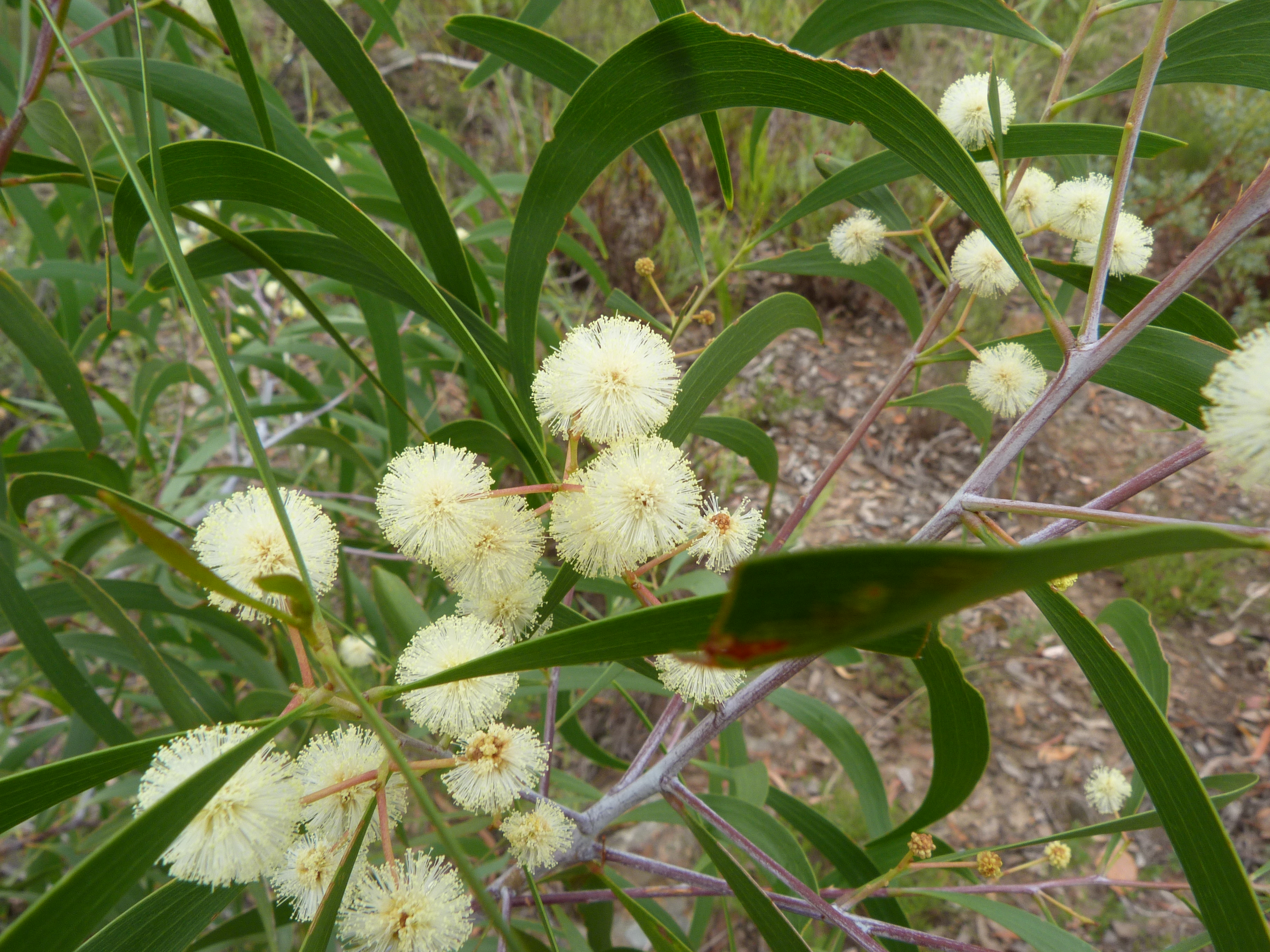
Acacia implexa, commonly known as lightwood or hickory wattle, is a fast-growing Australian tree, the timber of which was used for furniture making. The wood is prized for its finish and strength. The foliage was used to make pulp and dye cloth. The Ngunnawal people of the ACT used the bark to make rope, string, medicine and for fish poison, the timber for tools, and the seeds to make flour.
It is widespread in eastern Australia from central coastal Queensland to southern Victoria, with outlying populations on the Atherton Tableland in northern Queensland and Tasmania's King Island. The tree is commonly found on fertile plains and in hilly country it is usually part of open forest communities and grows in shallow drier sandy and clay soils.
Acacia implexa flowers - photo by Donald Hobern.
World Wetlands Day 2021: Wetlands And Water
Tuesday February 2nd, 2021 is World Wetlands Day. This year’s theme of 'Wetlands and Water' shines a spotlight on wetlands as a source of freshwater and encourages actions to restore them and stop their loss. Our area has many freshwater creeks that provide a source of drinking water and breeding grounds for resident wildlife, particularly in the Warriewood Valley and McCarrs Creek ecosystem.
We are facing a growing freshwater crisis that threatens people and our planet. We use more freshwater than nature can replenish, and we are destroying the ecosystem that water and all life depend on most – Wetlands.
The 2021 campaign highlights the contribution of wetlands to the quantity and quality of freshwater on our planet. Water and wetlands are connected in an inseparable co-existence that is vital to life, our wellbeing and the health of our planet.
In Issue 480 an article run here stated Wetlands Have Saved Australia $27 Billion In Storm Damage Over The Past Five Decades - so worth taking care of ours, now and every day whether a creek leading into a lagoon or the beautiful mangroves or seaweed beds that thrive around the Pittwater Estuary.
World Wetlands Day
2 February each year is World Wetlands Day to raise global awareness about the vital role of wetlands for people and our planet. This day also marks the date of the adoption of the Convention on Wetlands on 2 February 1971, in the Iranian city of Ramsar on the shores of the Caspian Sea.
Wetlands
Wetlands are land areas that are saturated or flooded with water either permanently or seasonally. Inland wetlands include marshes, ponds, lakes, fens, rivers, floodplains, and swamps. Coastal wetlands include saltwater marshes, estuaries, mangroves, lagoons and even coral reefs. Fishponds, rice paddies, and saltpans are human-made wetlands.
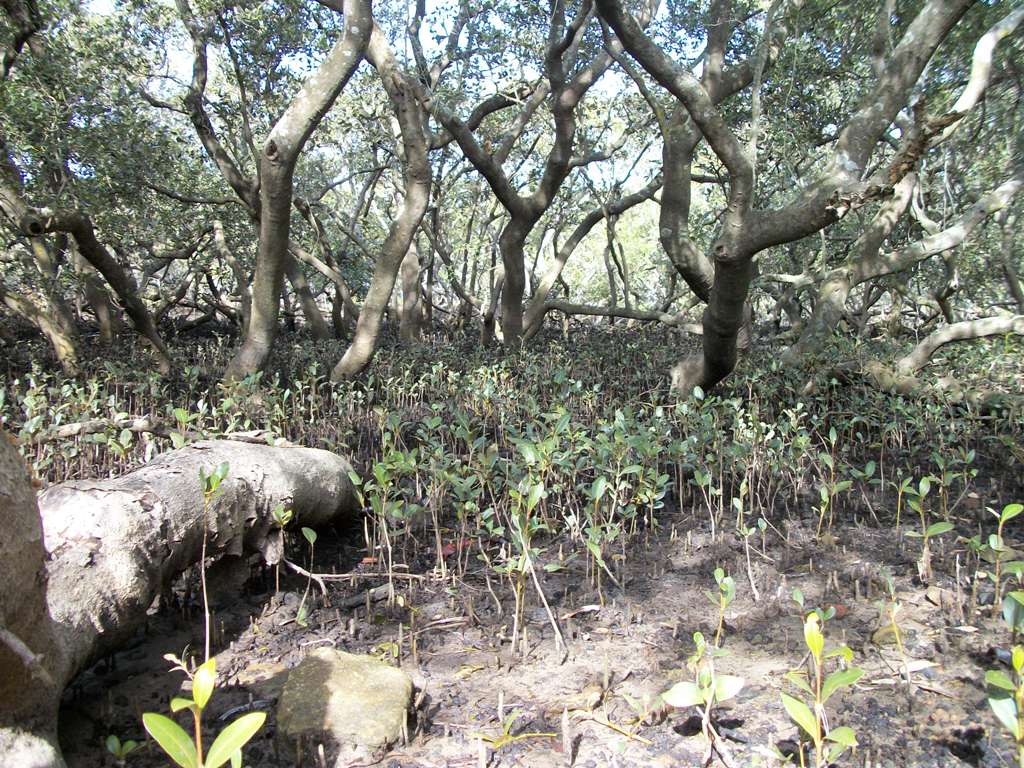
Flight2Light 2021
Bush Blitz, is partnering with the Australasian Dark Sky Alliance to raise awareness of the impacts of light pollution on the night time environment.
The Flight2Light event aims to educate Australians
about light pollution,
the impact it has on wildlife and
the simple ways they can reduce light pollution.
You can get involved in Flight2Light from the 6th-19th Feb 2021
Check back at Bush Blitz for information about how to register to take part in this nation wide event, receive a participation certificate and the satisfaction of helping our environment.
The Sydney Edible Garden Trail Gets Physical In 2021
The Sydney Edible Garden Trail is an event aimed at encouraging and inspiring edible gardeners in street gardens, home gardens and public spaces across Sydney.
Backyard growers, school and community gardens, large and small, will be opening their gardens to the public during the weekend of March 20 and 21, 2021, to celebrate the myriad of ways that Sydney residents are creating food security, saving money and the environment, while enjoying the health benefits of home-grown fruit and vegetables.
Costa Georgiadis of ABC Gardening Australia is on board with live feeds from the number of gardens in the lead up to the main event.
We’re on the lookout for private, community and school gardens to register as part of the trail. Gardens can register directly on our website up until 31 January 2021.
Check out some of the gardens already on board the trail - https://sydneyediblegardentrail.com/gardens/
The Trail will be showcasing sustainable practices such as mulching for water conservation, recycling and composting to increase soil fertility and reduce landfill, planting to encourage bees, home food production to increase food security, and organic growing techniques to reduce chemical use.
The Trail will be held over 2 weekends:
- 27-28 February 2021 - A virtual event. Costa Georgiadis, of ABC Gardening Australia will be hosting live feeds from a number of gardens for this virtual event.
- 20-21 March 2021 - A physical self-guided trail with backyard growers, school and community gardens, large and small, opening their gardens to the public.
The Trail is a ticketed event with profits going back into the community in the form of grants to local schools and community groups to support edible gardens. We believe this is a great way to grow and invest in sustainable communities. To see some of the grant recipients from our 2020 event please go to our website: https://sydneyediblegardentrail.com/2020-grant-recipients/
For more info on the background to the event, ticket prices and garden registration, please visit our website: www.sydneyediblegardentrail.com.
Costa and the Team - image supplied
Surfers For Climate
A sea-roots movement dedicated to mobilising and empowering surfers for continuous and positive climate action.
Surfers for Climate are coming together in lineups around the world to be the change we want to see.
With roughly 35 million surfers across the globe, our united tribe has a powerful voice.
Add yours to the conversation by signing up here.
Surfers for Climate will keep you informed, involved and active on both the local and global issues and solutions around the climate crisis via our allies hub.
Help us prevent our favourite spots from becoming fading stories of waves we used to surf.
Together we can protect our oceans and keep them thriving for future generations to create lifelong memories of their own.
Ross River Fever In Pittwater: What You Can Do To Beat Those Mosquitoes
Recent damp and humid weather is bringing out the mozzies, LOTS of mozzies - a reminder that Ross River Fever and Barmah Forest virus are now in our area and there are a few tips you can follow to keep you and your family safe:
1. It is important that if you’re spending a lot of time outdoors in these areas, especially close to wetlands and bush land areas at dawn and dusk when mosquitoes are most active, that you take action to reduce the risk of being bitten. Cover up with long sleeved shirts and long pants and apply an insect repellent. Choose a repellent that contains either DEET (diethlytoluamide), picaridin, or oil of lemon eucalyptus. Apply it to all exposed skin to ensure there is a thin even coat – a dab “here and there” doesn’t provide adequate protection.
2. You can also reduce the incidences of mosquitoes breeding by removing any shallow dishes of water or, if you have these out to feed wildlife and birds, regularly change the water so the stagnant water climate for them to breed is removed. Outbreaks can occur when local conditions of rainfall, tides and temperature promote mosquito breeding, so if we have rain followed by a warm day, check any receptacles in your garden and make sure they are emptied of water.
3. It is also a good idea to ensure you're not being bitten while asleep - repair any flyscreens that are damaged, or install them where absent. There are also a range of plants you can incorporate into your garden that repel mosquitoes and attract mosquito eating insects, such as dragonflies, or birds, possums, frogs and bats that will also reduce their numbers by eating them.
4. Similarly, if you're out and about in our wetland areas not chasing off or disturbing the wildlife that lives there, such as turtles or ducks, with ducklings just a few days old known to eat mosquitoes, will help. They eat them - we need this wildlife.
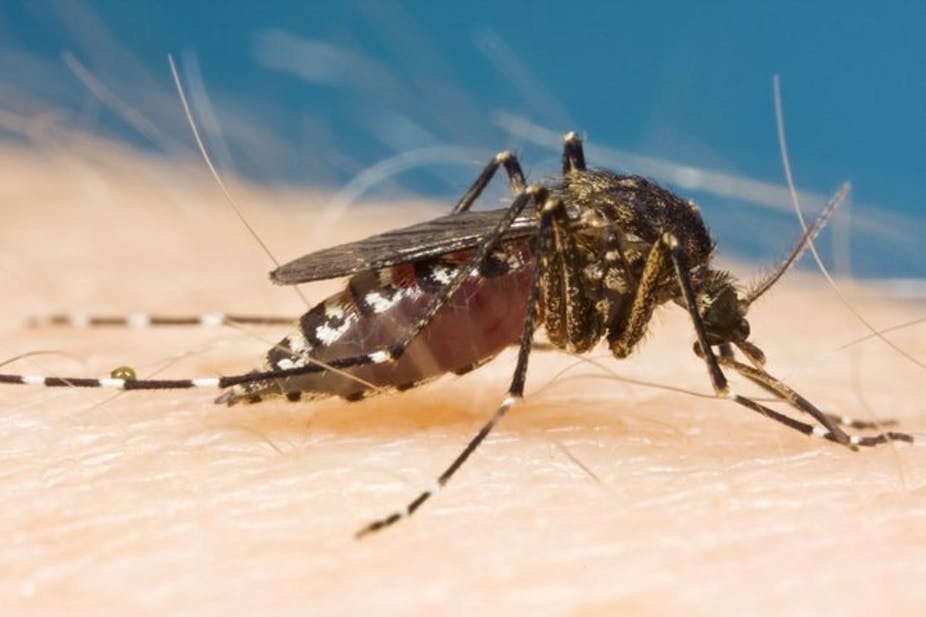
The saltmarsh mosquito, Aedes vigilax, transmits Ross River virus in many coastal regions of Australia. Photo: Mr Stephen Doggett (Medical Entomology, Pathology West - ICPMR Westmead)
Discussion On February 11, 2021: Environmental Issues On Our Northern Beaches
Right now, climate damage and habitat destruction are putting our coasts and communities at risk. From sea level rise and coastal erosion, to land clearing and unsustainable development, our beautiful region faces a number of environmental challenges.
That’s why we’re bringing your local federal Member of Parliament and other experts together to discuss the environmental issues facing Sydney’s Northern Beaches – and how together, we can keep our coasts and communities healthy for generations to come. Will you join us?
What: Healthy coasts, healthy communities: an online panel discussion
When: Thursday 11 February, from 7-8pm AEDT
Where: Online on Zoom. RSVP for the link.
Join our stellar lineup of speakers, including:
- Layne Beachley AO – 7-time world champion surfer and environmental campaigner
- Dr Vanessa Pirotta – wildlife scientist and science communicator
- Jason Falinski MP – federal member for Mackellar
Plus Lynne Malcolm – ABC presenter and former host of All in the Mind podcast – as our MC for the night.
Once you’ve RSVP’d to the event you’ll have an opportunity to submit a question to any of the panel speakers. With such a wealth of knowledge and expertise behind them, we’re sure you’ll have lots to ask!
Hosted by the Australian Conservation Foundation
Upcoming Activities For Friends Of Narrabeen Lagoon Catchment:
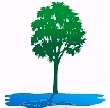
Sun 21 February 2021: 7.30 am Walk & Weed along the Narrabeen Lagoon catchment transverse walk.
Start at Oxford Falls walk for 3 1/2 hours, weed for 30min, continue 30min walk and car pool back to start.
Bring gloves and long handled screwdriver if available.
Walk grade: medium.
Bookings essential. Conny 0432 643 295
https://www.narrabeenlagoon.org.au/
Friends of Narrabeen Lagoon Catchment are pleased to announce the next forum will be held on 22 Feb 2021 at 7 pm .
Presenter: Jayden Walsh
Jayden is a keen observer of nature and has some stunning photographs and information to share.
The focus will be on wildlife that lives near the Narrabeen Lagoon and that, if you are fortunate, you may see when on the Narrabeen Lagoon walkway.
For details on how to book for this event are on the website. At: https://www.narrabeenlagoon.org.au/Forums/forums.htm
Bushcare In Pittwater
Where we work Which day What time
Avalon
Angophora Reserve 3rd Sunday 8:30 - 11:30am
Avalon Dunes 1st Sunday 8:30 - 11:30am
Avalon Golf Course 2nd Wednesday 3 - 5:30pm
Careel Creek 4th Saturday 8:30 - 11:30am
Toongari Reserve 3rd Saturday 9 - 12noon (8 - 11am in summer)
Bangalley Headland 2nd Sunday 9 to 12noon
Bayview
Winnererremy Bay 4th Sunday 9 to 12noon
Bilgola
North Bilgola Beach 3rd Monday 9 - 12noon
Algona Reserve 1st Saturday 9 - 12noon
Plateau Park 1st Friday 8:30 - 11:30am
Church Point
Browns Bay Reserve 1st Tuesday 9 - 12noon
McCarrs Creek Reserve Contact Bushcare Officer To be confirmed
Clareville
Old Wharf Reserve 3rd Saturday 8 - 11am
Elanora
Kundibah Reserve 4th Sunday 8:30 - 11:30am
 Mona Vale
Mona Vale Mona Vale Beach Basin 1st Saturday 8 - 11am
Mona Vale Dunes 2nd Saturday +3rd Thursday 8:30 - 11:30am
Newport
Bungan Beach 4th Sunday 9 - 12noon
Crescent Reserve 3rd Sunday 9 - 12noon
North Newport Beach 4th Saturday 8:30 - 11:30am
Porter Reserve 2nd Saturday 8 - 11am
North Narrabeen
Irrawong Reserve 2nd Saturday 2 - 5pm
Palm Beach
North Palm Beach Dunes 3rd Saturday 9 - 12noon
Scotland Island
Catherine Park 2nd Sunday 10 - 12:30pm
Elizabeth Park 1st Saturday 9 - 12noon
Pathilda Reserve 3rd Saturday 9 - 12noon
Warriewood
Warriewood Wetlands 1st Sunday 8:30 - 11:30am
Whale Beach
Norma Park 1st Friday 9 - 12noon
Western Foreshores
Coopers Point, Elvina Bay 2nd Sunday 10 - 1pm
Rocky Point, Elvina Bay 1st Monday 9 - 12noon
Gardens And Environment Groups And Organisations In Pittwater
Pittwater Reserves
Draft Horse Riding Plan For South East Wollemi National Park
The National Parks and Wildlife Service (NPWS) is encouraging people to have their say on proposed horse-riding opportunities in south east Wollemi National Park before submissions close on 14 March 2021.
NPWS Director David Crust said that following strong local community interest over many years, the Service has developed a draft management plan that proposes a number of recreational trails in the Wheeny Creek – Mountain Lagoon area.
“This draft plan proposes how we will assess, rationalise and formalise horse-riding trails in this area,” said Mr Crust.
“There is a long history of horse riding in the Wheeny Creek – Mountain Lagoon area and under this draft plan riders continue to have a strong connection to this landscape.
“We’re proposing to formalise a series of low-impact riding trails that essentially follow existing park management trails.
“Doing so will minimise impacts on threatened species and the conservation values of the area, as well as tie into our existing trail maintenance program.
“The draft plan will ensure we have management arrangements in place to support unique and enjoyable horse-riding opportunities for the community.
“The plan refers only to a 28,000-hectare section of Wollemi National Park, an area in the south east that was not heavily impacted by last summer’s bushfires.
“We welcome feedback on the plan and encourage members of the public and interest groups to make a submission via formal channels so all comments can be recorded and considered,” said Mr Crust.
The public exhibition period for the plan has been extended and submissions now close 14 March 2021.
To read the Draft Horse Riding Management Plan: South East Wollemi National Park and to find out more:
- NPWS Hawkesbury-Nattai Area, Bowmans Cottage, 370 Windsor Street, Richmond – by appointment via email to: npws.hawkesburynattai@environment.nsw.gov.au
- Hawkesbury City Council, 366 George Street, Windsor
- NPWS Glenbrook, end Bruce Road, Glenbrook - by appointment via email to: npws.hawkesburynattai@environment.nsw.gov.au
- Blue Mountains Heritage Centre, end Govetts Leap Road, Blackheath (9.00am to 4.30pm daily)
If you would like to make a submission please follow the instructions via our website.
Independent Review Of The Environment Protection And Biodiversity Conservation Act Final Report Released
January 28, 2021
After tens of thousands of submissions, many meetings with stakeholders, detailed comments and over 12 months, the final report of the Review of Australia’s national nature laws is finally out.
Conducted by Professor Graeme Samuel, the Independent Review of the Environment Protection and Biodiversity Conservation Act is the biggest examination of how our nature laws are working in the last decade.
With the final report now delivered, the Australian Government has a robust blueprint for new federal nature laws to better protect our precious environment and arrest the extinction crisis.
The report makes a number of critical recommendations including:
- Strong, outcome focussed National Environmental Standards to guide decision making
- Independent oversight and audit to build confidence that the Act, and the National Environmental Standards are working
- A mandated, rigorous compliance and enforcement regime to ensure compliance and enforcement of environmental approval conditions
- Outcomes-focused law, which will require the capacity to effectively monitor and report on environmental outcomes
- Harnessing the knowledge of Indigenous Australians to better inform how the environment is managed
- Recognition that environmental protection under RFAs is insufficient and the need for immediate reform and Commonwealth oversight - a critical element to the ending of logging in the habitat of endangered species like the Swift Parrot
The final report states in its Key Message that;
Australia’s natural environment and iconic places are in an overall state of decline and are under increasing threat. The environment is not sufficiently resilient to withstand current, emerging or future threats, including climate change. The environmental trajectory is currently unsustainable.
The EPBC Act does not clearly outline its intended outcomes, and the environment has suffered from 2 decades of failing to continuously improve the law and its implementation. Business has also suffered. The Act is complex and cumbersome and it results in duplication with State and Territory development approval processes. This adds costs to business, often with little benefit to the environment.
The EPBC Act and its operation requires fundamental reform to enable the Commonwealth to:
- set clear outcomes for the environment and provide transparency and strong oversight to build trust and confidence that decisions deliver these outcomes and adhere to the law
- actively plan for environmental outcomes and restore the environment to accommodate Australia’s future development needs in a sustainable way
- measure effectiveness to ensure that the Act delivers the right level of protection to make a difference for the environment and to support adjustments where changes are needed
- respect and harness the knowledge of Indigenous Australians to better inform how the environment is managed.
New, legally enforceable National Environmental Standards are the centrepiece of the recommended reforms.
- The Standards should focus on outcomes for matters of national environmental significance and on the fundamental processes for sound decision-making. Standards should prescribe that all activities contribute to national environmental outcomes.
- Decisions should be made in a way that is consistent with the Standards. The rare exception being where the Commonwealth overtly exercises discretion, demonstrably and transparently justified in the public interest.
- The full suite of National Environmental Standards recommended should be implemented immediately. The Standards developed in detail by the Review should be accepted in full, and other necessary Standards should be developed and implemented without delay.
- All the Standards are necessary to improve decision-making by the Commonwealth and to provide confidence that any agreements to accredit States and Territories will contribute to national environmental outcomes not just streamline development approvals.
Strong oversight of the implementation of National Environmental Standards is needed to provide the community, and the Australian Parliament, with the confidence that decisions are being made in a way that is consistent with the law.
- The new, independent, statutory position of Environment Assurance Commissioner (EAC) should be created. The EAC should be responsible for reporting on the performance of the Commonwealth, States and Territories, and other accredited parties in implementing the Standards.
- EAC reports should provide recommendations for action to the Environment Minister where there are issues of concern. The Minister should be required to publicly respond.
Separately, the National Environmental Standard for compliance and enforcement developed by the Review should be immediately implemented to ensure a robust and consistent approach to compliance and enforcement of decisions under the EPBC Act or accredited arrangements.
- The Commonwealth should immediately establish a new independent Office of Compliance and Enforcement within the Department of Agriculture, Water and the Environment. It should have modern regulatory powers and tools to enable it to deliver compliance and enforcement of Commonwealth approvals, consistent with this Standard.
- To be accredited, States and Territories and other parties should also ensure compliance and enforcement consistent with this Standard.
Reform is needed to ensure that Indigenous Australians are listened to and decision-makers respectfully harness the enormous value of Indigenous knowledge of managing Country.
- The National Environmental Standard for Indigenous engagement and participation in decision-making developed by this Review should be immediately adopted to deliver initial improvements.
- The current laws that protect Indigenous cultural heritage are well behind community expectations. They do not deliver the level of protections that Indigenous Australians deserve and the community expects. These laws should be immediately reviewed, and reform should be delivered in line with best practice requirements for Indigenous heritage legislation.
Reversing the unsustainable environmental trajectory will require good planning to manage the environment, as well as broadscale environmental restoration.
- Ultimately, governments should shift their focus from individual project approvals to a focus on clear outcomes, integrated into national and regional plans for protecting and restoring the environment and plans for sustainable development. The National Environmental Standards set clear outcomes for matters of national environmental significance. The EPBC Act needs to enable more effective planning and governments must commit to and resource the development and implementation of plans.
- All relevant levers of government should be focused on delivering outcomes for MNES that are aligned with the priorities of plans. This includes program funding and regulatory levers such as how and where the impacts of development can be offset in an ecologically feasible way.
- The size and long-term nature of investment required in restoration cannot be delivered solely by governments. New mechanisms are needed to leverage private-sector investment and to align this with national outcomes for the environment. It will be important to get the institutional settings for these investments right, and detailed work is required to design them well.
Decision-makers, proponents of development and the community do not have access to the best available data, information and science. There is insufficient capability to understand the likely impacts of the interventions made, particularly in a changing climate. Unacceptable information gaps exist, and many matters protected under the EPBC Act are not monitored at all. Poor data and information are costly for all. A quantum shift in the quality of data and information will support the reforms recommended by this Review.
- A national supply chain of information will deliver the right information at the right time to those who need it. Better data and information are needed to set clear outcomes, effectively plan and invest in a way that delivers them, and to efficiently regulate development.
- A long-term strategy is needed, so that each investment contributes to building and improving the system. Clear requirements for the provision and use of data and information should be immediately mandated through the National Environmental Standard for data and information.
The focus of all recommendations made by the Review is on ensuring the intended outcomes of the EPBC Act are clear and they are achieved. The operation of the Act must support continuous improvement.
- A coherent framework for monitoring, evaluating and reporting on the effectiveness of the EPBC Act is required to understand if we are on track to achieve outcomes and, if not, where a change of course is needed.
- A new overarching advisory committee – the Ecologically Sustainable Development Committee – should be assigned responsibility for developing this framework and reporting on outcomes for matters of national environmental significance.
The 38 recommendations in this Review amount to substantial and necessary reforms to reverse the current state of environmental decline. They will enable Australia to meet future development needs in a sustainable way and will support long-term economic growth, environmental improvement and the effective protection of Australia’s iconic places and heritage for the benefit of current and future generations.
The Final Report may be accessed in full at: https://epbcactreview.environment.gov.au/resources/final-report
The Final Report is comprehensive, and the Government will spend the time needed to fully consider Professor Samuel’s recommendations, before providing a formal government response.
Wedge-Tailed Eagle Deaths Near Deniliquin Linked To Pesticide Poisoning
January 27, 2021
The NSW Environment Protection Authority (EPA) has confirmed that several wedge-tailed eagle deaths near Deniliquin last year were the result of pesticide poisoning and is calling on the public to help identify the source.
On October 29, 2020 a report from a member of the public led NSW Police to find eight dead eagles off Willurah Rd outside of Conargo in southern NSW.
EPA officers collected two of the birds and sent them for analysis at the Department of Planning, Industry and Environment’s environmental forensic laboratory.
The toxicology results showed the eagles died as a result of pesticide poisoning.
EPA Director Regulatory Operations Gary Whytcross said the EPA and NSW Police suspect the birds were specifically targeted.
“To find that many birds dead less than forty metres apart is highly suspicious and now with confirmation of pesticide poisoning it certainly looks like this was a targeted attack,” Mr Whytcross said.
“Wedge-tailed eagles, like all native Australian birds, are a protected species and it is illegal to harm one.
“Killing eight eagles with poison is a horrible crime and we want to find whoever did it.
“We’re calling on the public to come forward with any information that might help.
“If you’ve seen any unusual behaviour, or know anything that could assist us, please contact the EPA’s Environment Line on 131 555, the Deniliquin Police Station on 03 5881 9299 or CrimeStoppers on 1800 333 000.”
The EPA and NSW Police are continuing their investigation into the matter.
Report Cane Toad Sighting In NSW To Stop The Spread
January 29, 2021
A small number of cane toads, believed to have been brought into the State from Queensland, have been detected at various locations in NSW, prompting a call today from the NSW Government for residents to keep an eye out for the unwanted pest.
Minister for Agriculture Adam Marshall said new cane toad incursions had recently been reported in the Sydney, North Coast, South Coast and North West regions.
“Cane toads are a serious biosecurity threat that can cause devastating impacts on communities, native wildlife, pets and ecosystems,” Mr Marshall said.
“It’s believed these pests hitchhiked their way into NSW from Queensland through freight, green waste or loads of timber, as they are known to do.
“So, today I ask the Sydney, North Coast, South Coast and North West communities to help keep your regions safe by reporting any sightings to NSW Department of Primary Industries.
“If you’re coming from cane toad infested areas such as Queensland or the Northern Territory, please check your luggage, vehicle or trailer to ensure you are not unwittingly carrying an unwanted passenger.”
The public has been asked to report any suspected cane toads, as the specimen could be a native frog. The amphibian should not be killed if it has not been positively identified as a cane toad.
A suspected cane toad should be immediately reported to NSW DPI Biosecurity through its helpline on 1800 680 244 or by completing the online form or emailing a photo of the face and details to invasive.species@dpi.nsw.gov.au
Mr Marshall said in recognition of the serious biosecurity threat posed by cane toads and to prevent their spread, the NSW Government introduced a formal Biosecurity Zone for this species in 2019 under the NSW Biosecurity Act 2015.
“The best way to control the cane toad is to report their presence and manage them responsibly when detected,” Mr Marshall said.
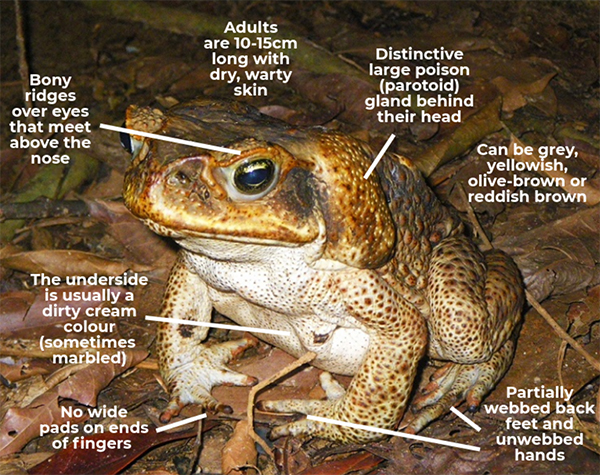
Little Corellas
Little Corellas (Cacatua sanguinea) - group spotted flying around as part of Sulphur-crested cockatoo (Cacatua galerita) group, in Pittwater Spotted Gums (Corymbia maculata).
Little Corellas are mostly white, with a fleshy blue eye-ring and a pale rose-pink patch between the eye and bill. In flight, a bright sulphur-yellow wash can be seen on the underwing and under tail. The sexes are similar in plumage, and young birds look like the adults, but are slightly smaller.





Images taken 6.30am, Careel Bay, January 25th, 2021, A J Guesdon photos.

Flannel Flowers(Actinotus helianthi), Mackerel Track - photo by Selena Griffith, January 27, 2021


Native hyacinth orchid (Dipodium punctatum), Little Mackerel, Currawong, photo by Selena Griffith, January 27, 2021

View over Great Mackerel Beach, photo by Selena Griffith, January 27, 2021
 Shorebird Identification Booklet
Shorebird Identification Booklet
The Migratory Shorebird Program has just released the third edition of its hugely popular Shorebird Identification Booklet. The team has thoroughly revised and updated this pocket-sized companion for all shorebird counters and interested birders, with lots of useful information on our most common shorebirds, key identification features, sighting distribution maps and short articles on some of BirdLife’s shorebird activities.
The booklet can be downloaded here in PDF file format: http://www.birdlife.org.au/documents/Shorebird_ID_Booklet_V3.pdf
Paper copies can be ordered as well, see http://www.birdlife.org.au/projects/shorebirds-2020/counter-resources for details.
Download BirdLife Australia's children’s education kit to help them learn more about our wading birdlife
Shorebirds are a group of wading birds that can be found feeding on swamps, tidal mudflats, estuaries, beaches and open country. For many people, shorebirds are just those brown birds feeding a long way out on the mud but they are actually a remarkably diverse collection of birds including stilts, sandpipers, snipe, curlews, godwits, plovers and oystercatchers. Each species is superbly adapted to suit its preferred habitat. The Red-necked Stint is as small as a sparrow, with relatively short legs and bill that it pecks food from the surface of the mud with, whereas the Eastern Curlew is over two feet long with a exceptionally long legs and a massively curved beak that it thrusts deep down into the mud to pull out crabs, worms and other creatures hidden below the surface.
Some shorebirds are fairly drab in plumage, especially when they are visiting Australia in their non-breeding season, but when they migrate to their Arctic nesting grounds, they develop a vibrant flush of bright colours to attract a mate. We have 37 types of shorebirds that annually migrate to Australia on some of the most lengthy and arduous journeys in the animal kingdom, but there are also 18 shorebirds that call Australia home all year round.
What all our shorebirds have in common—be they large or small, seasoned traveller or homebody, brightly coloured or in muted tones—is that each species needs adequate safe areas where they can successfully feed and breed.
The National Shorebird Monitoring Program is managed and supported by BirdLife Australia.
This project is supported by Glenelg Hopkins Catchment Management Authority and Hunter Local Land Services through funding from the Australian Government’s National Landcare Program. Funding from Helen Macpherson Smith Trust and Port Phillip Bay Fund is acknowledged.
The National Shorebird Monitoring Program is made possible with the help of over 1,600 volunteers working in coastal and inland habitats all over Australia.
The National Shorebird Monitoring program (started as the Shorebirds 2020 project initiated to re-invigorate monitoring around Australia) is raising awareness of how incredible shorebirds are, and actively engaging the community to participate in gathering information needed to conserve shorebirds.
In the short term, the destruction of tidal ecosystems will need to be stopped, and our program is designed to strengthen the case for protecting these important habitats.
In the long term, there will be a need to mitigate against the likely effects of climate change on a species that travels across the entire range of latitudes where impacts are likely.
The identification and protection of critical areas for shorebirds will need to continue in order to guard against the potential threats associated with habitats in close proximity to nearly half the human population.
Here in Australia, the place where these birds grow up and spend most of their lives, continued monitoring is necessary to inform the best management practice to maintain shorebird populations.
BirdLife Australia believe that we can help secure a brighter future for these remarkable birds by educating stakeholders, gathering information on how and why shorebird populations are changing, and working to grow the community of people who care about shorebirds.
To find out more visit: http://www.birdlife.org.au/projects/shorebirds-2020/shorebirds-2020-program
Aussie Bread Tags Collection Points

NSW Action Plan To Turn Ideas Into Jobs
January 25, 2021
Research and development will become a key jobs creator in NSW as the government launches a bold new plan to make the state an R&D world leader.
Premier Gladys Berejiklian today launched the Turning Ideas into Jobs – Accelerating Research & Development in NSW Action Plan.
The report, which was delivered to the Premier by her Parliamentary Secretary Gabrielle Upton, is the NSW Government’s first significant step towards reforming the R&D sector.
“The pandemic has reinforced to us the power of collaboration,” Ms Berejiklian said.
“The private sector, academia and the NSW Government collaborated to unlock crucial supplies and to solve difficult problems on behalf of the people of NSW.
“We are now bottling that spirit of collaboration and applying it to how we support R&D across the State. This is only the start of the commitments we will be making to R&D.
“R&D will be a powerful jobs creator during our economic recovery. For every dollar invested in R&D there can be an economic benefit of 14 dollars in return.”
Ms Upton worked with an Advisory Council of eminent leaders chaired by David Gonski AC and undertook broad public consultation to finalise five priority actions.
The NSW Government has already committed $26 million from the NSW 2020/21 Budget to fund two of the priority actions in the report including launching a Small Business Innovation Research program and establishing an R&D matchmaking platform.
Ms Upton said the Advisory Council conducted extensive consultations with leaders in large, SME and start-up businesses, investors, educators, researchers and innovators across all sectors.
“Their message to our government was the increasing need to be proactive in supporting and attracting new businesses, especially in future industries that will sustain economic growth, productivity and employment,” Ms Upton said.
“In a post–COVID-19 world, this means that the NSW Government’s record investments in ‘hard’ infrastructure such as roads and public transport needs to be complemented by strategic investment in ‘soft’ infrastructure – R&D, research translation and infrastructure – which drives these growing and emerging industries.”
Mr Gonski welcomed the report and thanked the wide range of people and organisations who contributed to it.
“This report comes at a critical time. The devastating impact of COVID-19 on investment in R&D and the downstream impacts on economic growth and job creation makes this task an urgent one,” Mr Gonski said.
“Decisive government action to attract and leverage investment, improve cross-sector collaboration and rapidly translate ideas into new products and services will be integral to our recovery from this crisis.”
NSW Chief Scientist & Engineer, Professor Hugh Durrant-Whyte said the action plan’s focus is on implementing its five priority actions in a coherent, integrated and sustainable way to accelerate the translation and commercialisation of research in NSW.
“Another crucial aspect is the recommendation of the launch of a program of NSW R&D Missions aimed at solving the state’s long-term strategic challenges in areas including bushfire response, drought resilience, health and the transition to renewable energy.”
The NSW push to turn ideas into jobs is already underway, with the homegrown AgTech pioneer, Agerris, developing robotic and AI technologies to increase on-farm operational productivity.
Agerris technology was partially supported by a $1.3m grant from the NSW Office of the Chief Scientist and Engineer to develop and deploy an Agricultural Robotics STEM program.
Agerris can trace its origins to the world-class Australian Centre for Field Robotics based in Sydney and recently raised $6.5 million in new funding to commercialise its research. Agerris currently has 13 employees and is using these funds to build and scale their innovative robots here in NSW, providing high quality jobs.
Given the size of Australia’s agricultural sector, the opportunities for applying cutting edge technologies to increase productivity are huge.
Find out more about the report and the five-point action plan
Four New Fellowship Programs To Support NSW Arts And Cultural Sector
The NSW Government has announced four inaugural Fellowship programs, valued at up to $30,000 each, to drive the personal, creative and career advancement of NSW artists, practitioners and arts and cultural workers.
Create NSW is partnering with eminent arts organisations to deliver the four new Fellowship programs to five recipients at a total investment of $150,000: Aboriginal Curator Placement (Emerging) in partnership with Art Gallery of NSW, Conductor: Orchestral Conducting Fellowship with Sydney Youth Orchestra, NSW Aboriginal Creative Fellowship with the State Library Of NSW and NSW Musical Theatre Fellowship with Hayes Theatre Co.
Minister for the Arts, Don Harwin said the new Fellowships will connect emerging artists and cultural workers directly with established arts organisations to provide creative upskilling, mentorship and access to industry experts and opportunities to fulfil their career ambitions.
“Create NSW is partnering with a number of prestigious institutions to guide our NSW talent and develop their chosen arts practice across a growing suite of Fellowship programs.
“We are committed to fostering world-class arts and facilitating the creation of new cultural works across various artforms, including Aboriginal cultural and artistic practices.
“The arts industry boosts our state’s economy and is integral to the enrichment of our lives and social wellbeing,” said Mr Harwin.
The inaugural Aboriginal Curator Placement (Emerging) will offer two early-career Aboriginal curators the opportunity to deepen their experience through a placement at the Art Gallery of NSW. They will deliver two key curatorial and regional engagement projects over nine months. The Fellowship recipients will each be awarded $30,000 and mentored by the Gallery’s Manager, Touring Exhibitions and the Aboriginal and Torres Strait Islander Curatorial Team.
The NSW Aboriginal Creative Fellowship will provide an opportunity for an Aboriginal artist, knowledge holder or creative practitioner to undertake creative research that will work towards a presentation outcome at the State Library of NSW. The successful applicant will be supported through $30,000 in funding to conduct research and engage with the State Library collections, delving into subjects and materials from the Library’s Indigenous Collections.
The Conductor: Orchestral Conducting Fellowship will support the emerging and early career professional practice of an orchestral conductor through $20,000 funding and with $10,000 of in-kind support including mentorships. The successful applicant will undertake a broad-ranging professional development and orchestral Fellowship program over 12 months (part-time) with the Sydney Youth Orchestra.
The NSW Musical Theatre Fellowship will offer a composer, musical director and/or creative team to research and develop a new work of musical theatre with the support of Hayes Theatre Co. The successful applicant or group will be awarded $25,000 in funding along with $5000 of in-kind support and be connected with industry mentors from Hayes Theatre Co to work towards potential development and presentation opportunities.
Applications for the four Fellowships are now open and close at 5pm AEDST on Monday 1 March 2021. Visit the Create NSW website for more information, including full guidelines for each Fellowship, and to apply.
Resources Industry Donated $136 Million Over 20 Years To Australian Political Parties
New analysis of 20 years of AEC donation disclosures shows the resources industry is the largest donating industry to Australia’s political parties and campaigners. The research from the Centre for Public Integrity shows:
- The resources industry is the largest donating industry, making contributions 2.5 times greater than the property industry, the next biggest donor
- The resources industry made $136.7 million in political contributions from 1999-2019
- Many of the largest contributions came from companies who have policies against making political donations. These contributions were instead made to political campaigners who campaign and donate on their behalf.
- The Coalition received $15.18 million, more than three times the $4.88 million received by Labor
- Donations peaked in 2019 (Clive Palmer election) and 2016 (carbon tax election)
“The resources industry is by far the largest donating industry. Together they have donated 2.5 times more than property developers,” said the Hon Anthony Whealy QC, Chair of the Centre for Public Integrity.
“Donations can lead to greater access and influence.
“Companies that have policies against making donations are still having influence by donating to political campaigners and peak bodies. These organisations advocate and make donations on their behalf.”
“Clive Palmer made the largest political donation in history in the 2019 election. He influenced voters through ads and direct communications. There is nothing stopping other mining magnates from doing this in the future.”
“We need urgent reform to cap donations and spending, and make all donations transparent to voters in real time.”
Most Popular Baby Names 2020
Amelia has unseated Charlotte as the most popular girls’ baby name for 2020, while Oliver claimed prime position for the boys for the seventh straight year.
The NSW Registry of Births, Deaths and Marriages has released a list of the top baby names in 2020.
Amelia took out the girls’ top spot ahead of Olivia, while the always strong-performer Charlotte was bumped down to third place.
Oliver is still the leading name for boys, followed by Noah and William. The trio’s top 3 status has remained unchanged for the past 5 years.
Leo has become more popular over the past decade – jumping 61 spots up the rankings to reach fourth place in 2020. Isla has climbed 18 spots in the girls’ list to place fourth.
Zoe broke into the top 10 names for girls, where Ava, Chloe, Grace and Sophia remained unchanged. Lucas, Liam and Henry gained popularity in the boys’ list.
Mia, Jack, Thomas and James stayed in the top 10 lists but moved down the ranks.
Parents have 60 days to register their baby, which can be done for free online. Registration is important because it establishes the child’s legal identity in the community. It is also necessary for accessing government services such as schooling and Medicare.
A final list of the top 100 baby names will be published on the NSW Government News website in April 2021.
Scientists Use A Novel Ink To 3D Print 'Bone' With Living Cells
January 25, 2021
Scientists from UNSW Sydney have developed a ceramic-based ink that may allow surgeons in the future to 3D-print bone parts complete with living cells that could be used to repair damaged bone tissue.
Using a 3D-printer that deploys a special ink made up of calcium phosphate, the scientists developed a new technique, known as ceramic omnidirectional bioprinting in cell-suspensions (COBICS), enabling them to print bone-like structures that harden in a matter of minutes when placed in water.
While the idea of 3D-printing bone-mimicking structures is not new, this is the first time such material can be created at room temperature -- complete with living cells -- and without harsh chemicals or radiation, says Dr Iman Roohani from UNSW's School of Chemistry.
"This is a unique technology that can produce structures that closely mimic bone tissue," he says.
"It could be used in clinical applications where there is a large demand for in situ repair of bone defects such as those caused by trauma, cancer, or where a big chunk of tissue is resected."
Associate Professor Kristopher Kilian who co-developed the breakthrough technology with Dr Roohani says the fact that living cells can be part of the 3D-printed structure, together with its portability, make it a big advance on current state-of-the-art technology.
Up until now, he says, making a piece of bone-like material to repair bone tissue of a patient involves first going into a laboratory to fabricate the structures using high-temperature furnaces and toxic chemicals.
"This produces a dry material that is then brought into a clinical setting or in a laboratory, where they wash it profusely and then add living cells to it," Professor Kilian says.
"The cool thing about our technique is you can just extrude it directly into a place where there are cells, like a cavity in a patient's bone. We can go directly into the bone where there are cells, blood vessels and fat, and print a bone-like structure that already contains living cells, right in that area."
"There are currently no technologies that can do that directly."
In a research paper published recently in Advanced Functional Materials, the authors describe how they developed the special ink in a microgel matrix with living cells.
"The ink takes advantage of a setting mechanism through the local nanocrystallisation of its components in aqueous environments, converting the inorganic ink to mechanically interlocked bone apatite nanocrystals," Dr Roohani says.
"In other words, it forms a structure that is chemically similar to bone-building blocks. The ink is formulated in such a way that the conversion is quick, non-toxic in a biological environment and it only initiates when ink is exposed to the body fluids, providing an ample working time for the end-user, for example, surgeons."
He says when the ink is combined with a collagenous substance containing living cells, it enables in-situ fabrication of bone-like tissues which may be suitable for bone tissue engineering applications, disease modelling, drug screening, and in-situ reconstruction of bone and osteochondral defects.
Already there has been keen interest from surgeons and medical technology manufacturers. A/Prof. Kilian thinks while it's early days, this new bone-printing process could open up a whole new way of treating and repairing bone tissue.
"This advance really paves the way for numerous opportunities that we believe could prove transformational -- from using the ink to create bone in the lab for disease modelling, as a bioactive material for dental restoration, to direct bone reconstruction in a patient," says A/Prof. Kilian.
"I imagine a day where a patient needing a bone graft can walk into a clinic where the anatomical structure of their bone is imaged, translated to a 3D printer, and directly printed into the cavity with their own cells.
"This has the potential to radically change current practice, reducing patient suffering and ultimately saving lives."
Next up the duo will be performing in vivo tests in animal models to see if the living cells in the bone-like constructs continue to grow after being implanted in existing bone tissue.
Sara Romanazzo, Thomas Gregory Molley, Stephanie Nemec, Kang Lin, Rakib Sheikh, John Justin Gooding, Boyang Wan, Qing Li, Kristopher Alan Kilian, Iman Roohani. Synthetic Bone‐Like Structures Through Omnidirectional Ceramic Bioprinting in Cell Suspensions. Advanced Functional Materials, 2021; 2008216 DOI: 10.1002/adfm.202008216
Global Demand For Cancer Surgery Set To Surge
January 25, 2021
Public health researchers, led by UNSW Sydney, have estimated the number of cancer cases requiring surgery globally each year, predicting the number will rise from 9.1 million to 13.8 million from 2018 to 2040 -- an increase of 52 per cent or 4.7 million cases.
Their research shows the greatest relative increase will occur in 34 low-income countries, where the number of cases requiring surgery is expected to more than double by 2040 (314,355 cases to 650,164, or 107 per cent).
The modelling study, published in The Lancet Oncology on Friday, analysed global demand for cancer surgery and estimated surgical and anaesthesia workforce requirements between 2018 and 2040.
Lead author Dr Sathira Perera, a UNSW Scientia PhD scholar, said an absence of evidence-based estimates of future demand had restricted efforts to improve cancer care around the world.
Cancer is a leading cause of death and disability globally, and has substantial economic impacts, with recent evidence suggesting a disproportionate burden of disease in low- and middle-income countries.
"Our analysis has revealed that, in relative terms, low-income countries will bear the brunt of increased future demand for cancer surgery, bringing with it a need to substantially increase numbers of surgeons and anaesthetists," Dr Perera said.
"These findings highlight a need to act quickly to ensure that increasing workforce requirements in low-income countries are adequately planned for. There needs to be an increased focus on the application of cost-effective models of care, along with government endorsement of scientific evidence to mobilise resources for expanding services.
"In addition, access to post-operative care is strongly linked to lower mortality -- so, improving care systems globally must be a priority in order to reduce the disproportionate number of deaths following complications."
The modelling study was an international collaboration between researchers from UNSW Sydney, University of Toronto, Kings College London, and the World Health Organization.
The researchers used best-practice guidelines, patient characteristics and cancer stage data to calculate the proportion of newly diagnosed cancer cases requiring surgery in 183 countries.
To predict future surgery demand, they applied these rates to GLOBACAN cancer incidence predictions from 2018 to 2040.
The study did not assess the impact of COVID-19, but the researchers acknowledge the delivery of high-quality post-operative care is more challenging during a pandemic.
Global shortage of surgeons, anaesthetists
To deliver cancer surgery services optimally now and in future, the researchers also predicted requirements for surgical and anaesthesia workforces.
To evaluate current staffing gaps, they compared the optimal estimated workforce (the median workforce of 44 high-income countries) with the number of surgeons and anaesthetists in each country.
Dr Perera said there was a current global shortage of 199,000 surgeons and 87,000 anaesthetists.
"This is based on the current workforce of 766,000 surgeons and 372,000 anaesthetists, compared with 965,000 and 459,000 needed for an optimal workforce, respectively, in our modelling study," he said.
"The gap is estimated to be greatest in low-income countries, where the current surgeon availability is 22,000 fewer than the model estimated optimal number of 28,000 surgeons.
"The current number of anaesthetists in low-income countries falls 11,000 below the model estimated demand of 13,000 anaesthetists."
Optimal workforce estimates for 2040
In recognition of the rising global demand for cancer surgery, the researchers also calculated estimates for the optimal surgical and anaesthesia workforces needed in 2040.
Extrapolating 2018 data, taking account of the predicted future cancer incidence burden in each country, their findings revealed the surgical workforce will need to increase from 965,000 in 2018 to 1.416 million in 2040 (a 47 per cent increase).
The anaesthetist workforce would need to rise from 459,000 in 2018 to 674,000 in 2040 (a 47 per cent increase).
The researchers found the greatest relative increase in optimal workforce requirements from 2018 to 2040 would occur in low-income countries, where surgeon numbers are required to rise from 28,210 to 58,219 by 2040 (106 per cent).
Anaesthetist numbers would also need to increase from 13,000 to 28,000 by 2040 (115 per cent).
Dr Perera said: "But to match the current benchmark of high-income countries, the actual number of surgeons in low-income countries would need to increase almost 400 per cent (from 6,000 to 28,000), and anaesthetists by almost 550 per cent (from 2000 to 13,000), of their baseline values.
"This is because the current workforce in low-income countries is already substantially smaller than in high-income countries."
Potential limitations
The researchers acknowledged that estimates in their study relied on several assumptions. Dr Perera said: "We based predictions of future cancer rates on 2018 estimates, but country-level changes -- such as economic developments or altered capacity to screen for early diagnosis -- could impact cancer incidence and therefore surgical demand and workforce requirements.
"Furthermore, observed gaps in the workforce could also be narrower than the actual gaps in practice -- our predictions were conservative because we only considered initial surgical encounters without accounting for follow-up interactions."
Sathira Kasun Perera, Susannah Jacob, Richard Sullivan, Michael Barton. Evidence-based benchmarks for use of cancer surgery in high-income countries: a population-based analysis. The Lancet Oncology, 2021; DOI: 10.1016/S1470-2045(20)30589-1
Continuous Monitoring Of Proteins A Game-Changer For Patients With Deteriorating Health
January 25, 2021
A world-first discovery by researchers at Monash University and The University of Queensland could lead to faster and more effective treatments for chronic health complications, such as cardiovascular disease and cancer, with 'fluorescent' in vivo biosensors.
The research team, led by Dr Simon Corrie from Monash University's Department of Chemical Engineering and the ARC Centre of Excellence in Convergent Bio-Nano Science and Technology, took an antibody that binds EGFR (epidermal growth factor receptor) proteins and engineered it to monitor the concentration of EGFR proteins in serum solutions over time.
Co-authors of the paper, published in ACS Sensors, are Dr Christian Fercher, Dr Martina Jones and Professor Stephen Mahler from The University of Queensland and the Australian Institute for Bioengineering and Nanotechnology.
An inability to detect the growth of EGFR proteins in humans can be associated with the development of a number of tumours, including cancer, as well as the onset of diseases like Alzheimer's.
Using an independent detection mechanism developed by the research team, involving fluorescent dyes, researchers created a biosensor from a well-known antibody that was able to 'read out' changes of the EGFR protein in real-time by monitoring detectable changes in the fluorescence spectra.
The ability to monitor protein biomarker concentrations in body fluids in real-time is invaluable for tracking patients at risk of rapid deterioration, including those requiring personalised drug monitoring or those at high risk of complications arising from critical conditions, like sepsis, heart attack or tumour response to treatment.
No one has been able to engineer an antibody for continuous testing until now.
"All the diagnostic tests that we are familiar with involve sampling something (blood, urine, tissue) at a particular point in time and taking the same to a lab to interrogate it. But for patients suffering from acute conditions, in which time to diagnose and rapid treatment are very important, this traditional diagnostic process is not good enough," Dr Corrie said.
"Monitoring dynamic changes in proteins, for example protein levels increasing or decreasing over time, is likely to provide much more detailed information about a disease or treatment process, but the sensors required to do this don't exist outside of continuous glucose testing for diabetes.
"Our capacity to create antibodies, which bind reversibly to targets and can be 'read out' using fluorescence, means we can develop in vivo sensors. These sensors can monitor the levels of critical biomarkers as they change over time in response to a disease or treatment, rather than just sending a sample to a lab and getting a snapshot in a day or two.
"These biomarkers could include the amount of surface proteins on a cancer cell and whether or not a drug causes them to reduce in size, therefore testing the efficacy of treatment. It can also be used to monitor the concentration of potentially toxic drugs, like some antibiotics."
This discovery was able to engineer an antibody fragment capable of reversibly binding to a protein analyte (scFv) in a chemical solution, while retaining the specificity of the original antibody sequence.
Through their efforts, continuous in vitro monitoring over multiple hours was successfully recorded.
"Work is underway to employ dyes that are much better suited to medical applications," Dr Corrie said.
"In future, we expect that this process will be used to generate a range of biosensors that can monitor protein concentration continuously inside the human body, through a biopharmaceutical process, or in the environment."
Christian Fercher, Martina L. Jones, Stephen M. Mahler, Simon R. Corrie. Recombinant Antibody Engineering Enables Reversible Binding for Continuous Protein Biosensing. ACS Sensors, 2021; DOI: 10.1021/acssensors.0c01510
Disclaimer: These articles are not intended to provide medical advice, diagnosis or treatment. Views expressed here do not necessarily reflect those of Pittwater Online News or its staff.
VOYAGE AROUND WHALE AND PALM
By Pittwater Pathways, Published January 28, 2021
Express Yourself Exhibition 2021
The talent and creativity of more than 40 HSC Visual Art students on the Northern Beaches will be on display for the annual Express Yourself exhibition at the Manly Art Gallery & Museum (MAG&M) from February 19th until March 28th 2021.
The winners of the $3,000 Manly Art Gallery & Museum Society Youth Art Award and $5,000 Theo Batten Bequest Youth Art Award will be announced on Friday 19th of February. These two awards are granted annually to students featured in the exhibition.
Artist statements will be displayed alongside the artworks describing the inspirations and influences that informed the works and the students’ creative journeys.
Visitors are encouraged to vote for their favourite artwork in the KALOF People’s Choice Award which is announced at the end of the exhibition period.
Express Yourself is also part of Art Month Sydney, March 2021.
Exhibition: 19 February - Sunday 28 March 2021, 10am - 4pm daily (excluding Mondays)
Teachers' preview: Friday 19 February, 5 - 6pm. Bookings essential via Council’s website
Art Walk and Talk: Saturday 27 February, 3 – 4pm: Artists walk through the exhibition and discuss their works with the curator. Bookings essential via Council’s website.
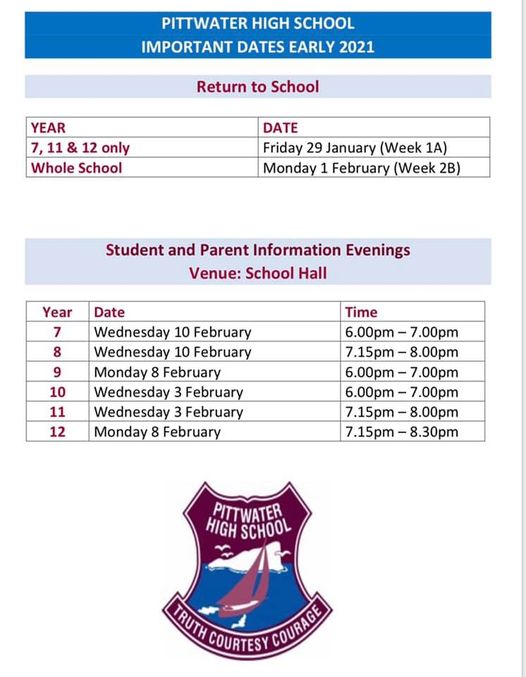

Students And Apprentices Urged To Claim For 2021
Following a difficult 2020 aspiring students and apprentices are encouraged to make the most of the Australian Government’s supports in 2021 and claim for Youth Allowance, ABSTUDY or Austudy now.
Minister for Government Services Stuart Robert said these payments help support students and apprentices as they work towards their study and career goals.
‘It has been truly inspirational to see the class of 2020 rise to the challenge and now we are encouraging you to claim early to give you more time to prepare for the next exciting chapter in your life,’ Minister Robert said.
‘It has never been easier to claim online so I would encourage all those young Australians pursing their aspirations through further study to lodge a claim for Youth Allowance, ABSTUDY or Austudy up to 13 weeks before your course or apprenticeship begins.’
Students who need to relocate to study may get a higher rate of Youth Allowance or ABSTUDY and may also be eligible for the Relocation Scholarship.
The new $5000 Tertiary Access Payment is also available to eligible students who recently finished year 12 and are moving from outer regional or remote Australia to begin tertiary study in 2021.
Youth Allowance provides financial support for young people aged 24 and under who are studying an approved course or doing an apprenticeship, and Austudy is for those 25 years and over.
ABSTUDY helps Aboriginal and Torres Strait Islander Australians while they undertake study or training.
For more information about payments and services for students and Australian Apprentices, visit servicesaustralia.gov.au/students.
Online Courses Added To Summer Skills Program
January 29, 2021
The Summer Skills program has been expanded to include seven TAFE NSW online short courses targeting school leavers from last year.
An expansion of fee-free Summer Skills training courses is now available for school leavers with new online courses on offer, as part of the JobTrainer initiative.
Minister for Skills and Tertiary Education Geoff Lee said the Summer Skills program, launched in November 2020, has expanded to include seven TAFE NSW online short courses targeting school leavers from last year.
“In designing the Summer Skills program, the NSW Government has ensured the training on offer is aligned to local industry needs,” he said.
“We need to provide the opportunities that help school leavers find their feet in these uncertain times. That’s why we’re delivering practical and fee-free training opportunities commencing this summer. Online learning is a terrific way to upskill at your own pace,”
Mr Lee said all the courses come from the $320 million committed to delivering 100,000 fee-free training places as part of the NSW Government’s contribution to the JobTrainer initiative.
“There are more than 100,000 fee-free training places available through TAFE NSW and approved providers for people across NSW to reskill, retrain and redeploy to growth areas in a post COVID-19 economy.
“I encourage anyone impacted by the pandemic to see what training options are available in 2021.”
Enrolments are open for Summer Skills training in:
- Cyber Concepts;
- Introduction to working in the health industry;
- Construction materials and Work Health and Safety;
- Mental health;
- Business administration skills;
- Introductory to business skills; and
- Digital security basics.
Visit the NSW Summer Skills webpage for full details on all available fee-free courses on offer and their eligibility as part of the NSW Summer Skills program, and visit the JobTrainer webpage for more information.
Successful Career In Tow For Female Apprentice
A 10,000km road trip around the Northern Territory sparked an interest in diesel mechanics for TAFE NSW student Gabrielle Bridgeman, who is now encouraging other females to take up a trade in 2021.
The 21-year-old is now studying a Certificate III in Heavy Commercial Vehicle Mechanical Technology at TAFE NSW Wetherill Park.
The NSW Government is paving the way for more women and mature workers to take up trades, with a $57.4 million commitment for a new Trades Skills Pathways Centre in the 2020-21 NSW Budget.
Gabrielle, who is employed at Tutt Bryant Equipment at South Granville, said she had always been interested in cars, but it was not until her 4WD road trip to central Australia that she found her passion.
“I’ve always been interested in understanding how things work and how pieces fit together so I’ve really excelled in this course,” Gabrielle said.
“My advice to other females interested in pursuing a career in a male-dominated trade is to dive in and follow your passion. TAFE NSW has supportive teachers that are ready to help you launch your career.”
TAFE NSW Automotive team leader, Chris Roberts, said the Certificate III in Heavy Commercial Vehicle Mechanical Technology was a nationally accredited course and was fully subsidised under JobTrainer.
“Now is the perfect time to pursue a career in automotive with the Australian automotive industry forecast to employ over 287,000 people by 2025,” Mr Roberts said.
“Students in the course will learn hands-on practical skills like repairing charging systems, starting systems and electrical systems and diagnosing brake, steering and suspension systems.”
To enrol in an automotive course in semester one, visit www.tafensw.edu.au or call 131 601.
Winter Sports 2021 Registrations
Netball
Narrabeen Youth Club - Netball
NYC (Narrabeen Youth Club) Netball is a local family-oriented netball club for U8's to Senior players, with competition running through winter on a Saturday at John Fisher Netball Courts in Curl Curl.
All details on how to register are available on our website: https://www.nycnetball.com.au/
Mona Vale Commodores Netball Club
Register for our Come and Try Netball Day on Saturday 23rd January from 10:30-12pm. Session will be held at New Life Gym at 10 Jubilee Ave, Warriewood. Ideal for kids aged 5-12 years. Please book your child’s free ticket at www.trybooking.com/BNMSC
Local family friendly netball club based on the Northern Beaches of Sydney catering for all levels from NetSetGo to Seniors. Live local, play local. Established in 1969.
To register visit: http://www.monavale.nsw.netball.com.au/
Newport Breakers Netball Club
Visit: https://www.facebook.com/newportnetball
Email: newportbreakersnetball@gmail.com
Pittwater Peninsula Netball Club
Online registrations are now open!! Go to www.peninsulanetball.org.au and follow the links.
Tips before you start:
- have your MyNetball details handy (if unsure or applying for the first time visit mynetball.resultsvault.com)
- if you would like to use the 2021 Active Kids Voucher visit http://www.service.nsw.gov.au/.../apply-active-kids-voucher
- once you have your MyNetball number and your Active Kids Voucher head to our website and click on Register then follow the prompts.
Baseball
Pittwater Baseball Club
Pittwater Baseball Club has been part of the community for over 35 years and has a great reputation. Our club has seen many families through from Ratpackers (4-6 yr olds) to Adult Senior Leagues (16+), plus Masters and Minor Leagues over summer and winter. We are about having fun with friends, Making new ones, learning good sportsmanship, developing skills and making memories... Our home field is Rat Park in Warriewood and we are part of the Manly Warringah Baseball Association.
So come join us and have a go.
Junior Rugby League
Mona Vale Raiders
16 Bishop Street, Newport
The Mona Vale Raiders are one of the fastest growing and one of the most successful junior rugby league clubs in the Manly Warringah competition. Our home ground is Newport Oval, which is located between Bishop St and Barrenjoey Rd. Our club is a family club and as such we have a policy of giving all young people who are interested in playing rugby league a fair go. This emphasis has allowed us to be one of the most successful clubs in the Manly Warringah Junior Rugby League competition. The suburbs we cover are Mona Vale, Newport, Warriewood, Ingelside, Bayview, Church Point and Scotland Island. For more information please contact registrar@monavalerugbyleague.com.au
Narrabeen Sharks
In 2021 we will celebrate our 89th season. As the oldest and biggest club on the peninsular we have a long tradition of producing Junior Representative, First Grade and Australian Representative players. We have teams for every age group from Under 6s to Under 20s as well as Open Age A Grade and Over 35s Masters where we have players in their 60s. We are a community based club with a strong focus on family and inclusion. Our values are Honour, Respect, Loyalty, Integrity and Teamwork. Most of all we have FUN while developing our skills under qualified coaches in a safe environment. We accept Active Kids Vouchers so have your details ready. Come and make some lifelong friends while you play the greatest game of all with the Narrabeen Sharks. Email: sharksregistrar2101@gmail.com
Avalon Bulldogs
Avalon Bulldogs Junior Rugby League Club fields teams from Under 6's through to Open Age within the Manly Warringah District and NSW Northern Conference Competitions. Email: sambaum@optusnet.com.au
Junior Rugby Union
Newport Junior Rugby Club
We welcome registrations from kids of all abilities and all ages from U6 to U18.
To register your children to play for Newport Rugby Club, you will need to set up your MyRugby account and register your children online following the steps here.
If you have any questions with regards to your registration, please contact our registrar or one of your age managers ( details in our committee tab ).
Important Note: Register for “Newport Junior Rugby” not Newport Rugby which is the senior rugby club! For any u10 players and above you will need to upload a photo for match day records.
More at: https://www.newportjuniorrugby.com.au/registration/
Narrabeen Tigers Junior Rugby Club
Narrabeen Tigers Rugby is a family club that prides itself on providing a safe and happy atmosphere where boys and girls can play rugby with their mates and learn some great new skills along the way. We are affiliated with Warringah Junior Rugby Union, and are located adjacent to Warringah Seniors rugby (Pittwater Rugby Park) at North Narrabeen Reserve, North Narrabeen.
We have over 300 registered players, all the way from under 6 to under 17 year olds. We are also very proud to have grown the girls teams in our club. Girls of any age are welcome to play in mixed teams, however for under 8/9, under 11, under 13 and under 15, we offer girls only teams and comps. Most age groups will have 2 teams entered, allowing both serious and social players to enjoy their rugby with Tigers. All of our coaches are SmartRugby™ accredited.
2021 registrations are now open! Register before 31 December 2020 to use your 2020 Active Kids Voucher. For details on how to register click here. Registrations for girls competitions will open in the new year.
More at: https://www.narrabeenrugby.com.au/
Soccer
Narrabeen Football Club
Narrabeen FC, established in 1965, is one of Sydney Northern Beaches oldest football clubs, competing in the Manly Warringah Football Association. NFC’s focus is on the development of youth, fair play and competition. NFC fields teams from juniors through to senior. Register for 2021.
ONLINE registrations for the 2021 season open on 3 January 2021 for all players. Please make sure you read the instructions carefully before starting the process. Download a factsheet.
Registration – Before you start read this
Open from 3 January 2021
Register at www.playfootball.com.au. Please note, the website works best in Safari or Chrome.
Credit card payment only
*2021 season rego fees have been reduced due to a one off reimbursement from MWFA resulting from Covid-19.
Early Bird discount for all registrations received before midnight Friday 12 February 2021.
To claim the Active Kids Rebate, please visit the Services NSW Government website and obtain a claim number, BEFORE you register.
Read important information about player registrations, 2021 football season at Narrabeen FC and MWFA Instructions prior to registering.
Visit: http://www.narrabeenfc.com.au/register-and-play-football-with-narrabeen-fc/
Pittwater RSL Football Club
Pittwater RSL FC (Pride of the Peninsula) is looking forward to having you on board as a player and member of the Club. ‘Oh we love the greens’.
Registration for the 2021 Season is now open! Follow this link for a full run down of the rego process:
https://www.pittwaterrslfc.com.au/register-now/
Parents – Don’t forget to register for the Active Kids Rebate this year!
Avalon Soccer Club
2021 registration is now open. We are delighted to announce that registration for the 2021 MWFA season is officially open. With the grading and team forming due next month, we are offering an Early Bird discount of $25 for our members from the 4th January 2021 to 7th February 2021. This will be applied at the time of registering.
To register for Avalon Soccer Club head to the Play Football website. Full registration information for Avalon can be found HERE.
This season to process the large volume of registrations there are 3 registrars.
- Jactina Newcombe Juniors U6-U11 registrar@avalonsoccerclub.com.au
- Jill Thain Mixed U12-O55 registrar1avalonsoccerclub@gmail.com
- Amie Stylianou Womens W12-WO35 registrar2avalonsoccerclub@gmail.com
When asked to email information to the registrar please choose the relevant registrar for your age category. This will prevent delays in processing your registration.
Many teams fill up quickly and we will soon be closing off registration for some age groups. Any registrations after this time will be placed on a waitlist, pending sufficient players to create an additional team in that age group. Where possible, waitlisted players will be accommodated in an alternative age group (with returning players given priority). For any queries please get in touch with the relevant age coordinator.
Family Discounts
Parents registering their children under the same login can obtain a family discount for the 2nd plus family member. No discount applies for the first family member, then each of the other family members select from the following:
- 2nd family member $10 select 1st sibling
- 3rd family member $15 select 2nd sibling
- 4th family member $20 select 3rd sibling
- 5th family member $25 select 4th sibling
Student Discounts
Student discounts only apply to full-time adult student Student ID must be emailed to the registrar.
Coaches and Managers
All coaches and managers need to upload a photo and enter your working with children number, also please enter the team that you will manage or coach. All these fields are mandatory. Select the option Role Coach and both the Coach and Team Manager products will appear.
To be a coach or manager of a team with any players under the age of 18 you will need to have a valid working with children check before you can be issued your ID card. There must be a valid coach and manager for every team before they are permitted to play. You can apply for a working with children check here: https://www.service.nsw.gov.au/transaction/apply-working-children-check
If you already have a WWC check please make sure that the ‘valid to date’ will not expire during this season – apply for an updated check if that is the case.
Registration Information Day
Will be held at our club house at Careel Bay on Saturday 6th February 9:00am – 3:00pm.
If you have any questions about playing with Avalon (or would just like to meet us) then come along. The uniform store will be open on this day for any of your kit needs.
Active Kids Voucher
The Active Kids Rebate program provides a $100 voucher towards the cost of registration for U6 to U18 players. Players must obtain their voucher BEFORE registering. For more information about the Active Kids Rebate click here. To apply for your voucher from Service NSW click here. Vouchers are per child, not per family.
New Players
Welcome to all new players, especially if you are playing football for the first time. You will need to create an account and then register to play. We always try and place all our U6 and U7 players in the same team as their friends. If you have any questions, please contact your age coordinator.
Returning Players
All returning players MUST register with their FFA number from last year, not create a new number. The system will default to the club you last played at. If you played for a different club last season or played in a summer competition then remember to change the club to Avalon when registering.
If you have changed your email or forgotten which email you used to register last year then phone or email the Play Football helpdesk to assist you. Ph: 02 8880 7983 Playfootball.support@ffa.com.au
Registrations are based on the age that you will be on the 31st December 2021. For example, if you turn 7 anytime in 2021 you will then select U7 Mixed Saturday. To play in the U6s a child must be turning 5 or 6 anytime in 2021 and be born in either 2015 or 2016. This is an FFA rule.
Make sure you select the correct product when registering. Boys can only play in Saturday mixed competitions. Girls should register in a Sunday girls package if they want to play on Sunday.
More at: https://avalonsoccerclub.com.au/2021/01/04/2021-registration-is-open/
There's no such thing as 'alternative facts'. 5 ways to spot misinformation and stop sharing it online

The blame for the recent assault on the US Capitol and President Donald Trump’s broader dismantling of democratic institutions and norms can be laid at least partly on misinformation and conspiracy theories.
Those who spread misinformation, like Trump himself, are exploiting people’s lack of media literacy — it’s easy to spread lies to people who are prone to believe what they read online without questioning it.
We are living in a dangerous age where the internet makes it possible to spread misinformation far and wide and most people lack the basic fact-checking abilities to discern fact from fiction — or, worse, the desire to develop a healthy skepticism at all.
Read more: Stopping the spread of COVID-19 misinformation is the best 2021 New Year’s resolution
Journalists are trained in this sort of thing — that is, the responsible ones who are trying to counter misinformation with truth.
Here are five fundamental lessons from Journalism 101 that all citizens can learn to improve their media literacy and fact-checking skills:
1. Distinguishing Verified Facts From Myths, Rumours And Opinions
Cold, hard facts are the building blocks for considered and reasonable opinions in politics, media and law.
And there are no such things as “alternative facts” — facts are facts. Just because a falsity has been repeated many times by important people and their affiliates does not make it true.
We cannot expect the average citizen to have the skills of an academic researcher, journalist or judge in determining the veracity of an asserted statement. However, we can teach people some basic strategies before they mistake mere assertions for actual facts.
Does a basic internet search show these assertions have been confirmed by usually reliable sources – such as non-partisan mainstream news organisations, government websites and expert academics?
Students are taught to look to the URL of more authoritative sites — such as .gov or .edu — as a good hint at the factual basis of an assertion.
Searches and hashtags in social media are much less reliable as verification tools because you could be fishing within the “bubble” (or “echo chamber”) of those who share common interests, fears and prejudices – and are more likely to be perpetuating myths and rumours.
2. Mixing Up Your Media And Social Media Diet
We need to be break out of our own “echo chambers” and our tendencies to access only the news and views of those who agree with us, on the topics that interest us and where we feel most comfortable.
For example, over much of the past five years, I have deliberately switched between various conservative and liberal media outlets when something important has happened in the US.
By looking at the coverage of the left- and right-wing media, I can hope to find a common set of facts both sides agree on — beyond the partisan rhetoric and spin. And if only one side is reporting something, I know to question this assertion and not just take it at face value.
3. Being Skeptical And Assessing The Factual Premise Of An Opinion
Journalism students learn to approach the claims of their sources with a “healthy skepticism”. For instance, if you are interviewing someone and they make what seems to be a bold or questionable claim, it’s good practice to pause and ask what facts the claim is based on.
Students are taught in media law this is the key to the fair comment defence to a defamation action. This permits us to publish defamatory opinions on matters of public interest as long as they are reasonably based on provable facts put forth by the publication.
The ABC’s Media Watch used this defence successfully (at trial and on appeal) when it criticised a Sydney Sun-Herald journalist’s reporting that claimed toxic materials had been found near a children’s playground.
This assessment of the factual basis of an opinion is not reserved for defamation lawyers – it is an exercise we can all undertake as we decide whether someone’s opinion deserves our serious attention and republication.
Read more: Teaching children digital literacy skills helps them navigate and respond to misinformation
4. Exploring The Background And Motives Of Media And Sources
A key skill in media literacy is the ability to look behind the veil of those who want our attention — media outlets, social media influencers and bloggers — to investigate their allegiances, sponsorships and business models.
For instance, these are some key questions to ask:
who is behind that think tank whose views you are retweeting?
who owns the online newspaper you read and what other commercial interests do they hold?
is your media diet dominated by news produced from the same corporate entity?
why does someone need to be so loud or insulting in their commentary; is this indicative of their neglect of important facts that might counter their view?
what might an individual or company have to gain or lose by taking a position on an issue, and how might that influence their opinion?
Just because someone has an agenda does not mean their facts are wrong — but it is a good reason to be even more skeptical in your verification processes.
Read more: Why is it so hard to stop COVID-19 misinformation spreading on social media?
5. Reflecting And Verifying Before Sharing
We live in an era of instant republication. We immediately retweet and share content we see on social media, often without even having read it thoroughly, let alone having fact-checked it.
Mindful reflection before pressing that sharing button would allow you to ask yourself, “Why am I even choosing to share this material?”
You could also help shore up democracy by engaging in the fact-checking processes mentioned above to avoid being part of the problem by spreading misinformation.![]()
Mark Pearson, Professor of Journalism and Social Media, Griffith Centre for Social and Cultural Research, Griffith University, Griffith University
This article is republished from The Conversation under a Creative Commons license. Read the original article.
Aussie Bush Icons – Gang-Gang Cockatoo And Acacias
Published by Bird in Back Yards TV, January 25, 2021
These up-close scenes of Gang-gang Cockatoos (Callocephalon fimbriatum) were captured between early November 2020 and early January 2021 in the Capertee Valley (NSW). Each encounter was alongside a fire trail that winds through woodland and open forest on the slopes of a private conservation property adjoining Wollemi National Park. Those treed slopes are revealed in the final scene (shot before sunset in mid December 2020), which includes the distant call of a Gang-gang Cockatoo. (A clearer recording of their distinct voice can be found at the 0.38 mark.) The acacia blossoms were filmed at the same site in August 2020. This stunning location was a fitting stage for a bird whose scientific name translates to "beautiful fringed head".
In 2018-2019, Gang-gang Cockatoos (aka Gang-gangs) were largely elusive on our valley visits. Only the odd glimpse of a flyover or a brief stop high in a tree. But in late June 2020 we were thrilled to see a pair foraging in the eucalypt canopy next to the aforementioned fire trail. During another winter trip and again in early spring we noted their calls in less accessible parts of the back slopes, generally the same area and time of day (within the last hour or so of daylight), and on successive days. Then in early November came the delightful sight of three Gang-gangs feeding on the fresh (green) seed of low acacia (aka wattle) bushes. At first glance the heads of the males look like waratah flowers amidst the greenery. Luckily camera proximity compensated for the fading light. (On all filming occasions they seemed to be quite unperturbed.) The following day was “Groundhog day”, or should that be “Gang-gang day” as they return to a particular tree (or shrub) until the food is exhausted (HANZAB).
In mid December 2020 a Gang-gang gang of five was observed briefly around the same location. Given the species usually spends summer in higher, cooler and wetter eucalypt forests (e.g. upper Blue Mountains), we expected this to be the last encounter for a while. Yet in early January 2021, again we found a pair feeding next to the fire trail (but this time, on the dry seed of a different species of acacia). Although altitudinal movements can vary in different areas and amongst individuals, could it be that a relatively wet and mild early summer encouraged them to linger? Certainly made us linger! What a relief after the extreme heat and threatening fire of the previous spring and summer.
Drought-breaking rains that started in February 2020 may have contributed to great year for acacias; the late winter-early spring peak was the best display of blossoms we have seen at this property. Moreover, conservation efforts have ensured a mix of acacia species with both overlapping and different flowering times, and hence long periods of seed availability. While the recent Gang-gang pair was relishing mature seeds, another type of wattle was in full flower. Acacias truly are the gift that keeps on giving. Their pollen is food for insects (and thus a boon for insectivores) and their seeds are consumed by various birds and other wildlife. Acacias also improve soil nitrogen and sprout quickly after fire, providing much-needed protection for surviving animals. And of course, their beauty and ubiquity inspired the floral emblem of Australia and the sporting colours of green and gold. Gang-gang Cockatoos also have a special place as one of Australia’s favourite birds and the faunal emblem for the Australian Capital Territory (ACT).
Friday essay: masters of the future or heirs of the past? Mining, history and Indigenous ownership
Clare Wright, La Trobe UniversityAboriginal and Torres Strait Islander readers are advised this article contains images and names of deceased people.
In May 2020, the international mining giant Rio Tinto made a calculated and informed decision to drill 382 blast holes in an area of its Brockman 4 mining lease that encompassed the ancient rock shelter formations at Juukan Gorge in Western Australia’s Pilbara region.
In a matter of minutes, eight million tonnes of ore were ripped from the earth, and with them, 46,000 years of cultural heritage destroyed.
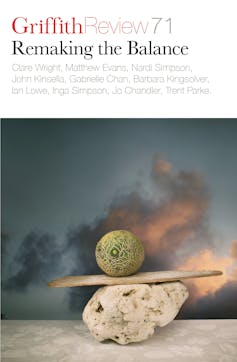
The Puutu Kunti Kurrama Pinikura people, who are the traditional owners of that land, lost their material connection to sacred sites of ceremonial, clan and family life, the basis for their political and social organisation. The Australian people lost a significant chunk of their national estate. For this hefty price we all paid, Rio Tinto lawfully gained access to $135 million dollars of high-grade iron ore.
The Human Rights Law Centre said that the global Corporate Human Rights Benchmark, based in the Netherlands, should strip Rio Tinto of its status as a global human rights leader. Prime Minister Scott Morrison, who three years earlier had lovingly cradled a lump of coal in his hands in parliament, said nothing.
In the devastating wake of Juukan, it is timely to ask: can the extractive frontier be just as important as the military frontline in defining the story of our nation?
Read more: Juukan Gorge inquiry puts Rio Tinto on notice, but without drastic reforms, it could happen again
Nothing New Under The Sun
One day, all Australian primary school students might learn about the Juukan Gorge the way generations have studied the 19th-century Victorian goldrush, with its own explosive crescendo, the Eureka Stockade.
To recap: gold was “discovered” in Ballarat in 1851, when the population of Victoria was about 25,000. By 1861, after a tidal wave of immigration from across the globe, that number had risen to over 600,000. Escaping old-world hierarchies, inequality and poverty, polyglot schemers and dreamers dug their way towards a new life of freedom and independence.
When the British rights and liberties of these cosmopolitan miners were threatened by an authoritarian administration and unjust taxation, the disenfranchised diggers rebelled, leading to a short battle and a long legacy: Eureka became known as “the birthplace of Australian democracy”. Recent research, including my own, has demonstrated that women as well as men participated in this mining boom and its economic and political, if not mythological, inheritance.
Similarly little recognised is the fact that the central Victorian goldrush occurred on the lands of the Wathawurrung people, who had made the fertile hunting grounds of the Ballarat basin their ancestral home for tens of thousands of years.
It is estimated that prior to European contact there were up to 3,240 members of the 25 Wathawurrung language groups. By 1861, 255 Aboriginals remained in the Ballarat region.

As historian Fred Cahir has shown in his landmark book Black Gold, some goldseekers were aware of the extensive quarrying, and subsequent commercial transactions, being carried out by Victoria’s Indigenous inhabitants prior to and after British colonisation. Indeed, resource extraction was practised by Indigenous people throughout the continent.
Batjala-Quandamooka-Kalkadoon historian Kal Ellwood has traced the principal mining trade routes of pre-colonial Australia, proving that Aboriginals used sophisticated underground and pit mining techniques, as well as post-extraction treatment processes, as part of complex commercial relationships.
Indigenous Australia had its own stories to explain how minerals were created and where they were deposited. The bronzewing pigeon Marnbi, for example, seeded gold at Broken Hill, copper at Cloncurry, sandstone at Mt Isa and opals at Coober Pedy. The Europeans were novel. The activity they undertook was not.
The Indigenous people of central Victoria might have been dispossessed, but they were not diffident. They installed toll booths on bridges, requested bounties on vessels crossing rivers, took food and goods from domiciles, and demanded financial restitution for revenue extracted from the land, all as a matter of cultural and legal entitlement stemming from prior ownership: “indefeasible title from time immemorial”, as Wathawurrung elder King Jerry put it to the Geelong Council. (Common law title, as we might call it post-Mabo.)
Such insistence, however, fell on deaf ears. In June 1860, by which time the tent city of Ballarat had been replaced by houses, churches and schools, the Victorian government established a system of six reserves to control and administer the affairs of Aboriginal people.
Read more: Noted works: The Forgotten Rebels of Eureka
The Other Peninsula Campaign
For most Australians, the phrase “the Peninsula campaign” conjures the distant shores of Gallipoli, where ANZACs fought against an alien enemy, apparently for our freedom.
But another battle waged much closer to home — indeed at home — was also referred to as “the Peninsula campaign”. This contest for territorial control occurred on the Gove Peninsula, on the north-east tip of Arnhem Land. The contest was over access to land that contained some of the richest bauxite reserves in the world. It played out over a decade from the late 1950s. The critical year of the campaign was 1963.

The Minister for Territories in the Menzies government, Paul Hasluck, commanded the forces of expansion and development of the Top End; the Yolngu people of the Yirrkala region were the defenders of land that had been legally reserved for them in 1931, and to which they claimed ownership in perpetuity.
The Yirrkala Bark Petitions (August 1963) and the subsequent Select Committee on Grievances of Yirrkala Aborigines (October 1963) were key battles in the offensive. Depending on your perspective, the creation of the mining town of Nhulunbuy, built in 1972, was either the spoils of victory or the price of defeat in the Peninsula campaign.
The military metaphors are mine, not germane to the mining vernacular. I’ve deliberately deployed them here to highlight how much of our national historical consciousness is built around war stories. We understand the language of conflict in binary, adversarial terms: enemy and ally; victor and vanquished.
In reality, the story of how resource extraction led to a four-cornered contest over the right to define and control the narrative of nation-building in north-east Arnhem Land is more complex — and compelling.
Insulating Arnhem Land
The Arnhem Land Aboriginal Reserve, some 80,000 square miles of flat ironstone and low-lying stringybark forest, was established in 1931 with the intention of “insulating” the region’s Aboriginal population from the rest of the Northern Territory. Arnhem Land became “exclusively Aboriginal”; only missionaries, NT welfare officers and Yolngu were allowed in.
Fierce and co-ordinated Yolngu resistance, coinciding with drought, repelled pastoralists in the 1880s and early 20th century. It was not the first time that strangers had come to Arnhem Land. The Yolngu people are considered exceptional because they are the first Australian Aboriginals to have had contact with foreign visitors.
For at least 500 years, Yolngu engaged in seasonal trading visits with the Macassans, Indonesian seafarers who came to exploit the trepang beds of the north-east coast in exchange for tobacco, pottery, knives and cloth.
By the time the European visitors arrived overland, Yolngu had experienced centuries of adaptation to new material culture and notions of labour and trade for goods and services. They understood and engaged in economic and political relationships, both inter-tribally and internationally.
The next strangers to arrive were the missionaries who established bases at Roper River in 1908, Goulburn Island in 1916 and Milingimbi Island in 1923. Following violent encounters with Japanese pearlers and Darwin-based police, a Methodist mission was established at Yirrkala in 1935 to provide sanctuary for the more than dozen clans of Yolngu people of this Miwatj region.
Yirrkala, and surrounding Melville Bay, encompassed the traditional lands of the Gumatj and Rirritjingu clans. Yolngu, having long understood the positive use to which outsiders could be put, accepted the newcomers. The Methodists also accepted most cultural beliefs, permitted language and rituals, employed a philosophy of bilateral learning and, in many cases, developed genuine friendships and important alliances.
Prospecting
The first known geological reconnaissance at Gove occurred in 1952, fewer than two decades after the Yirrkala Mission was established, when Hasluck announced a change of policy, opening the NT’s Aboriginal reserves to mineral prospecting.
The time had come, Hasluck argued, to “extract the latent mineral wealth of the Territory”.
In 1958, the Commonwealth Aluminium Corporation (Comalco) was issued Special Mining Lease No. 1 to prospect 21 square metres of land on Melville Bay, abutting the Yirrkala Mission.
According to Hasluck, times had changed since the 1930s, when the system of Aboriginal land reserves had been established “liberally but rather carelessly”. Now, incentivised by the discovery that a blanket of bauxite lined the Gove Peninsula, Hasluck underscored ‘the necessity for developing our national resources’.
By the wet season of 1962, when the Reverend Edgar Wells took over as superintendent of the Yirrkala Mission, it had become commonplace to see prospectors “walk about the country, boring holes, marking off areas, and finally erecting buildings” without, according to Wells, “any attempt at explanation”. The miners, observed Wells, roamed around “with a renewed assurance … in complete optimism … masters of the future.
On 18 February 1963, the federal government ratified an agreement with Nabalco, a joint Swiss–Australian venture, to mine for bauxite. This meeting took place at the Methodist Overseas Mission’s headquarters in Sydney, attended by mining representatives but no Yolngu.
In May 1963, Rirritjingu elder Mawalan Marika put aside tribal rivalries to join with Mungurrawuy Yunupingu, senior elder of the Gumatj clan, and write to Hasluck. They requested 40 houses, "so we can exchange to make us level between you and we natives”.
The lack of consultation was the primary insult, not the idea that they might be asked to share their land. To the Yolngu mind, they were not only custodians of the land – caretakers – but also owners, with the capacity to cede territory.
When Hasluck unilaterally excised reserved land, he effectively stole land from people who understood both the spiritual and commercial value of their assets.
Notice of the excision of the Arnhem Land Reserve was published in the Government Gazette in May 1963. Over the next two months, there was a flurry of correspondence between Yirrkala, Darwin, Canberra and Sydney. Federal Labor MP Kim Beazley Sr, along with Labor MP Gordon Bryant (later Minister for Aboriginal Affairs and Minister for the Capital Territory in the Whitlam Government), made the long trek to Yirrkala in July to ascertain the level of distress.
Standing in the newly opened Methodist Church, Beazley contemplated the extraordinary artworks that flanked the altar: large boards painted by Yolngu elders of each clan and moiety, including Mungurrawuy. Edgar Wells’ wife, Ann, who interviewed each of the artists as they painted, recognised these panels were a “statement of land claims”, delineating language borders, natural features, sacred sites and “the disputes that inevitably arise over boundaries”.
On viewing the panels, Beazley suggested the Yolngu present a petition to the parliament in their own vernacular. Before leaving Yirrkala, he furnished the wording of the preamble required of any petition to the House. Yolngu did the rest.
Read more: Indigenous pain and protest written in the history of signatures
On 14 August, Beazley presented the House of Representatives with what have become known as the Bark Petitions: two versions of the text, one in English and one in Yolngu Matha, pasted onto bark and framed with traditional paintings.
There were eight points, but this is the crux: a protest against “decisions taken without them and against them” that were “never explained to them beforehand, and were kept secret from them”, as well as a plea to “hear the views of the people of Yirrkala before permitting excision of this land”. Nowhere do the petitions suggest that Yolngu are opposed to mining per se. What they requested was a voice.
Though Hasluck rejected the Bark Petitions on the grounds they didn’t represent the true wishes of the community (only a small group of young rabble-rousers), the Select Committee on Grievances of Yirrkala Aborigines was empowered — the first time in Australia’s history that a petition had directly led to a parliamentary enquiry.
It concluded that the Bark Petitions were “an appeal to the House of Representatives for protection”. It made 11 recommendations pertaining to how best to integrate the Yolngu into the inevitable establishment of a large mining town on the Gove Peninsula, while preserving sacred sites.
In 1963, the average Aboriginal life expectancy was 42 years. In 1968, the federal government signed an agreement with Nabalco for a 42-year lease to mine and process bauxite in Gove, conditional upon the construction of an alumina refinery and a township able to accommodate 4,000 mining workers, administrators, service providers and their families.
To Wells, the injustice of “giving away of ancestral territorial privilege of children’s children” was simply ‘beyond comprehension’.
Wells was sacked as superintendent on 11 November 1963. The mining lease for Juukan Gorge was granted in 1964.
‘They Tricked Us.’
In February 2020, I sat with Galarrwuy Yunupingu at his kitchen table in Gunyangara — the Gumatj homeland on Melville Bay, 15 kilometres from Nhulunbuy, now framed by the rusting carcass of the alumina refinery, mothballed by Rio Tinto in 2013 — and read him the list of recommendations from the Select Committee. How many of these things happened, I asked him? “Bangyu,” he answered: None.
They tricked us. They never gave us anything they promised. I’m afraid I have to come to this conclusion. They asked us but they didn’t listen.
Looking at the foundational moments of Ballarat and Nhulunbuy helps to elucidate patterns and themes that should be central to further exploration of how mining has defined the life of our nation. As Galarrwuy has said elsewhere, land rights are one thing, but ownership means more than a moral prerogative.
“We would like to turn the land into money,” Galarrwuy told a somewhat perplexed progressive audience at the 2013 Garma Festival. “Aborigines have land rights but are still the poorest people on earth.”
Ultimately, the Peninsula campaign was not only about the market value of the mineral resources themselves, but also the moral, legal and civic status conferred on those who would call themselves miners. Those who would bring the future along with their bores and excavators. Those who could drive the nation and the economy forward.
In her University of Melbourne Narrm Oration of 2015, From Hunting to Contracting, Marcia Langton outlined the history of Aboriginal Australians’ economic exclusion from colonial times to the 21st century. Mining, she argued, offered First Nations peoples “a new paradigm devoted to development”.
To Langton, examples of Indigenous wealth creation demonstrate Indigenous engagement with the private sector economy is the “best way to close the gap”. (Indeed, the Gumatj Corporation launched its own 100% Yolngu-owned mining training facility and bauxite operations in 2017.)
Where mining is concerned, however, economic development is not a “new paradigm” that Indigenous Australians have latterly come to accept as part of the logic of late capitalism or “postcolonialism”. Rather, an economic stake in the land is something that has been perennially contemplated and contested in territories that have come to hold commercial importance to white Australia.
What has changed, perhaps, is that mining companies have recognised the “social capital” of collaborative working relationships with Aboriginal “stakeholders”. Whether this new alliance proves to be a reliable means of “livelihood and independence” for Aboriginal communities remains to be seen.
Juukan Gorge represents the pinnacle of the colonial mining project. It fulfils the Four-F rating that is at the heart of Australia’s relationship to land: Find it. Fuck it. Flog it. Forget it. Let’s hope that Juukan stands as the most broken, defective, shattered and superseded point of the hill.
This is an edited extract, republished with permission from GriffithReview71: Remaking the Balance, edited by Ashley Hay.
Clare Wright is currently writing a book about the Bark Petitions, the third instalment of her Democracy Trilogy.![]()
Clare Wright, Professor of History, La Trobe University
This article is republished from The Conversation under a Creative Commons license. Read the original article.
Back to school: how to help your teen get enough sleep

When the holidays end, barring a fresh outbreak of COVID-19, teenagers across Australia will head back to school. Some will bounce out of bed well before the alarm goes off, excited to start a new school year, but many others will drag themselves to the shower or reach for caffeine to shake themselves awake.
Many will not have had enough sleep to tackle the trials and tribulations of their new school day.
Read more: 5 tips to help ease your child back into school mode after the holidays
I remember back to my days as a high school science teacher, when some of my students started falling asleep in class. My immediate thoughts were: have I lost my touch? Am I that boring?
Over-tiredness can also lead to misbehaviour. One of my usually good kids filled a disposable glove with water and hurled it around her head spraying water and ruining the work of other students. An investigation determined a string of very late nights perusing social media and texting friends. It was possible her over-tiredness led to an inability to regulate her behaviour.
How Phones Close To Bed Affect Sleep
With widespread school closures of 2020, and a reduction of face-to-face contact in 2020, teenagers used mobile phones more frequently to engage with their peers and online learning.
Teenagers need friendship networks to help them cope with stress and foster resilience.
Teens use devices to keep up to date with their friends’ activities on social media, or they may connect with a mate for an online gaming session, or phone a friend. Just like their parents, when teens aren’t connecting with their friends they are likely to use their smartphone like a mini-computer to stream videos and TV, listen to music, shop or catch up on news.
Of concern is that many of these activities occur into the night and in the confines of the teenager’s bedroom. This may not be a worry in the holidays when teens can sleep in but getting enough good quality sleep can be challenging when they have to be somewhere first thing in the morning.
Read more: Why screen time before bed is bad for children
Unfortunately, the constant use of technology can be at the expense of sleep with many teens missing out regularly on the required 8-10 hours a night.
Using a mobile phone into the night not only displaces sleep. Viewing screen-light also suppresses melatonin (the natural hormone that regulates our sleep-wake cycle), and provides content that may overstimulate the brain.
For teenagers, the pathway from increased late-night screen use leading to disrupted sleep and then contributing to increased depressed mood, behaviour problems, low self-esteem and difficulty coping can become well established.

Having enough sleep means teenagers brain cells will be alert during the school day. Sleep helps with the ability to think critically, and process and store new information, so teenagers become satisfied with their achievements at school.
Enough sleep also helps ward off daytime sleepiness and provides more energy to participate in vigorous physical exercise — an activity that helps ensure a good night’s sleep in itself.
Helping Your Teen Get A Good Sleep
The first thing you could do is locate or purchase an alarm clock (with no internet connection). You could then remove devices from the bedroom the night before school starts and set the alarm.
But still, teenagers’ routine of falling asleep late into the night during the holidays isn’t magically going to revert to an early bedtime.
Read more: Health Check: how can I make it easier to wake up in the morning?
On the first school night teens will probably lie awake (perhaps with heightened anxiety about their first day) and get frustrated. They will finally fall asleep, but be rudely awoken by the alarm. A grumpy start to the new year is to be avoided at all costs.
The message to teenagers and their parents is: understand the need for social connections but set curfews. Beyond setting such curfews on the phone itself, it’s important to remove it from the bedroom 30 minutes to an hour before sleep as wind-down time. Teenagers must learn to manage their own schedules by going to bed at a time that ensures when the alarm goes off they will have achieved between 8 to 10 hours sleep.
Here are some things that could make this easier:
at least a week before school starts, set the alarm 5-10 minutes earlier each day until the school day alarm time is reached
set earlier, regular bedtimes so as not to confuse the body clock
take all electronic devices out of all bedrooms (yes, set an example) and charge them in a place children can’t sneak out and access during the night
avoid caffeine, alcohol, energy drinks and large meals well before bedtime
exercise earlier in the day as this will increase tiredness. Make sure exercise isn’t too close to bedtime as this raises body temperature and increases cortisol (the stress hormone) making it harder for some people to fall asleep
try to get ahead of the problem by having conversations with your child before they reach their teens to make sure they understand the effects of not getting enough sleep
during the holidays, use sleep tracking apps to monitor sleep and set up the bedroom to be conducive to a good night’s sleep (no illuminated power cords, good airflow and a comfortable pillow and bedding).

Lynette Vernon, School of Education - VC Research Fellow, Edith Cowan University
This article is republished from The Conversation under a Creative Commons license. Read the original article.
The mystery of the blue flower: nature's rare colour owes its existence to bee vision
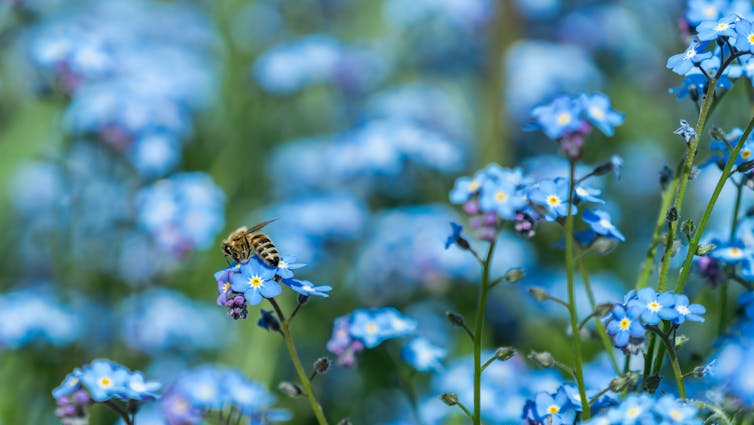
At a dinner party, or in the schoolyard, the question of favourite colour frequently results in an answer of “blue”. Why is it that humans are so fond of blue? And why does it seem to be so rare in the world of plants and animals?
We studied these questions and concluded blue pigment is rare at least in part because it’s often difficult for plants to produce. They may only have evolved to do so when it brings them a real benefit: specifically, attracting bees or other pollinating insects.
We also discovered that the scarcity of blue flowers is partly due to the limits of our own eyes. From a bee’s perspective, attractive bluish flowers are much more common.
A History Of Fascination

The ancient Egyptians were fascinated with blue flowers such as the blue lotus, and went to great trouble to decorate objects in blue. They used an entrancing synthetic pigment (now known as Egyptian blue) to colour vases and jewellery, and semi-precious blue gemstones such as lapis lazuli and turquoise to decorate important artefacts including the Mask of Tutankhamun.
Read more: Feeling blue? Get acquainted with the history of a colour
Blue dye for fabric is now common, but its roots lie in ancient Peru, where an indigoid dye was used to colour cotton fabric about 6000 years ago. Indigo blue dyes reached Europe from India in the 16th century, and the dyes and the plants that produced them became important commodities. Their influence on human fashion and culture are still felt today, perhaps most obviously in blue jeans and shirts.
Renaissance painters in Europe used ground lapis lazuli to produce dazzling works that captivated audiences.

Today many blues are created with modern synthetic pigments or optical effects. The famous blue/gold dress photograph that went viral in 2015 not only shows that blue can still fascinate — it also highlights that colour is just as much a product of our perception as it is of certain wavelengths of light.
Why Do Humans Like Blue So Much?
Colour preferences in humans are often influenced by important environmental factors in our lives. An ecological explanation for humans’ common preference for blue is that it is the colour of clear sky and bodies of clean water, which are signs of good conditions. Besides the sky and water, blue is relatively rare in nature.
What About Blue Flowers?
We used a new online plant database to survey the the relative frequencies of blue flowers compared to other colours.
Among flowers which are pollinated without the intervention of bees or other insects (known as abiotic pollination), none were blue.
But when we looked at flowers that need to attract bees and other insects to move their pollen around, we started to see some blue.
This shows blue flowers evolved for enabling efficient pollination. Even then, blue flowers remain relatively rare, which suggests it is difficult for plants to produce such colours and may be a valuable marker of plant-pollinator fitness in an environment.
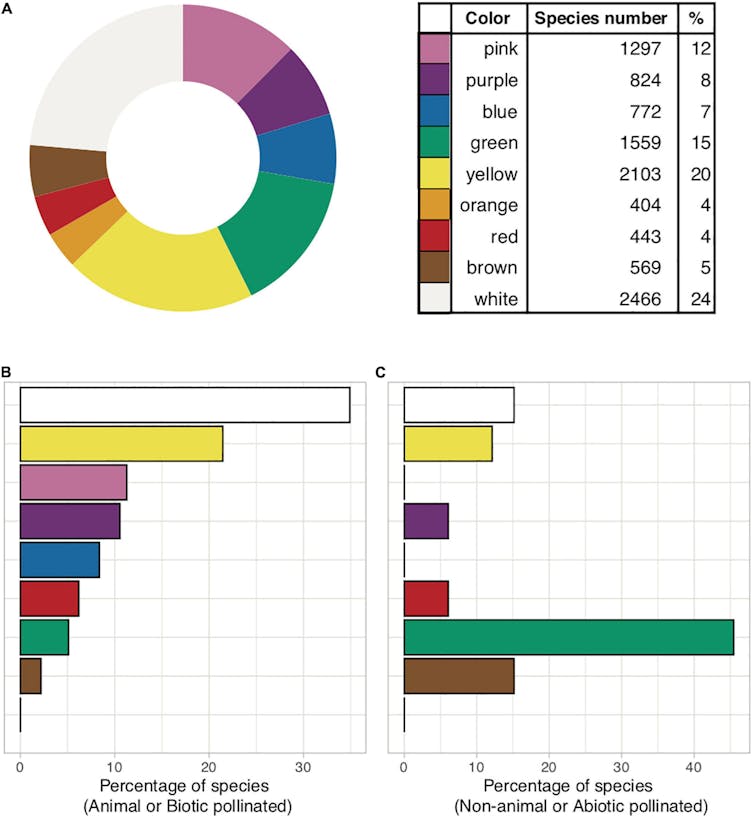
We perceive colour due to how our eyes and brain work. Our visual system typically has three types of cone photoreceptors that each capture light of different wavelengths (red, green and blue) from the visible spectrum. Our brains then compare information from these receptors to create a perception of colour.
For the flowers pollinated by insects, especially bees, it is interesting to consider that they have different colour vision to humans.
Read more: Inside the colourful world of animal vision
Bees have photoreceptors that are sensitive to ultraviolet, blue and green wavelengths, and they also show a preference for “bluish” colours. The reason why bees have a preference for bluish flowers remains an open field of research.
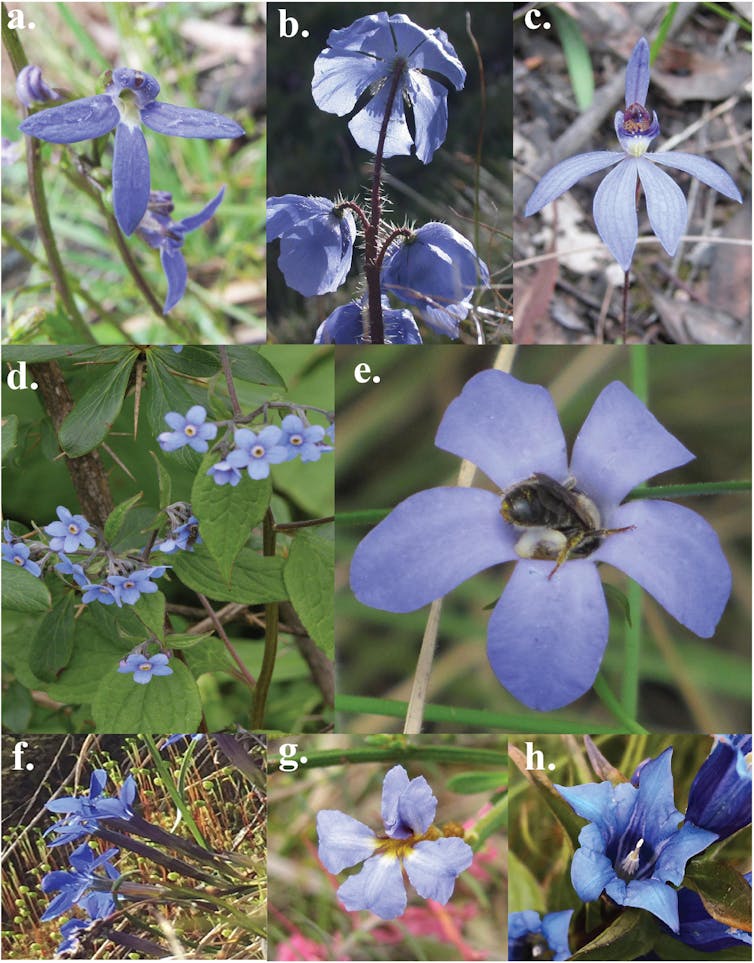
Why Understanding Blue Flowers Is Important
About one-third of our food depends on insect pollination. However, world populations of bees and other insects are in decline, potentially due to climate change, habitat fragmentation, agricultural practices and other human-caused factors.
The capacity of flowering plants to produce blue colours is linked to land use intensity including human-induced factors like artificial fertilisation, grazing, and mowing that reduce the frequency of blue flowers. In contrast, more stressful environments appear to have relatively more blue floral colours to provide resilience.
For example, despite the apparent rarity of blue flower colours in nature, we observed that in harsh conditions such as in the mountains of the Himalaya, blue flowers were more common than expected. This shows that in tough environments plants may have to invest a lot to attract the few available and essential bee pollinators. Blue flowers thus appear to exist to best advertise to bee pollinators when competition for pollination services is high.
Knowing More About Blue Flowers Helps Protect Bees
Urban environments are also important habitats for pollinating insects including bees. Having bee friendly gardens with flowers, including blue flowers that both we and bees really appreciate, is a convenient, pleasurable and potentially important contribution to enabling a sustainable future. Basically, plant and maintain a good variety of flowers, and the pollinating insects will come.
Read more: Our 'bee-eye camera' helps us support bees, grow food and protect the environment ![]()
Adrian Dyer, Associate Professor, RMIT University
This article is republished from The Conversation under a Creative Commons license. Read the original article.
Dressed for success – as workers return to the office, men might finally shed their suits and ties
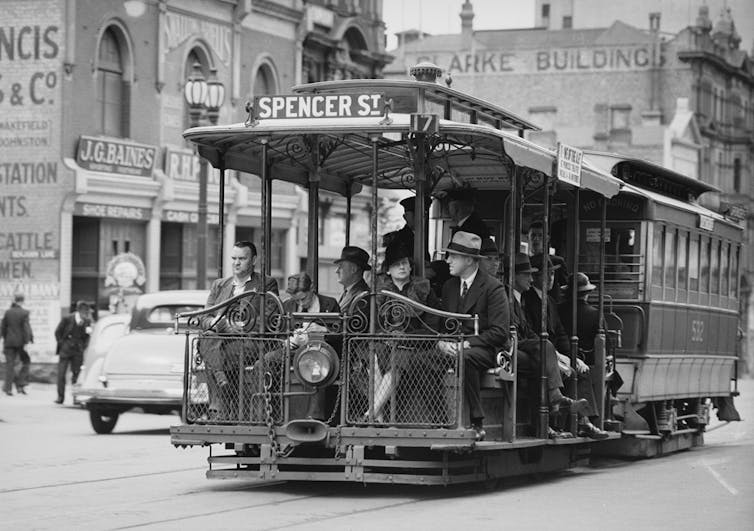
The summer break is over, marking a return to the office. For some, this ends almost a year of working from home in lockdown. Some analysts are predicting it might also mark an enduring shift in how we dress for success.
It’s not the first time in Australia’s history the return to “normal” life after times of turmoil has prompted calls for more comfortable dress. The suit — quintessential men’s business dress for more than a century — has sat at the heart of these debates.
What we dress in speaks of our occupation as much as it shapes how we work: a collar that is blue or white, a singlet or a suit. The history of the suit is also tied to ideas of masculinity, class, modernity and fashionable consumption.
Is it time men swapped the suit for something more relaxed?
The Birth Of The Business Suit
Young men moved away from formal professional attire of top hats and frock coats — cut with hems that fell to the knee — around the 1870s. Instead they wore “business fashion”, pairing tailored jackets, trousers and sometimes patterned waistcoats with white shirts. Stylish neckwear and bowler hats completed the look.
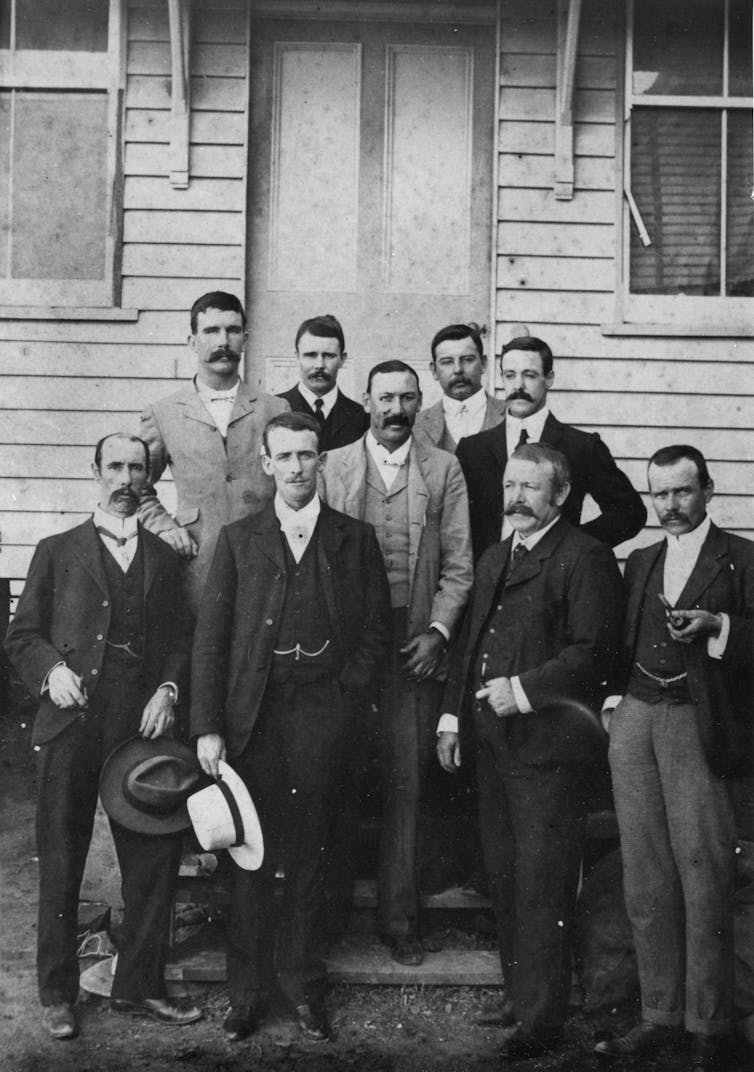
By the turn of the century, three-piece suits cut from the same dark-coloured woollen cloth were worn for work. These became known as “business suits”. They are strikingly similar to what we see businessmen wear today, though our contemporaries no longer wear them with stiff, detachable collars or watch chains.
As business suits became ubiquitous for city wear and office workers across Australia, working-men’s attire became increasingly practical. Those labouring in the sun or in roles demanding movement stripped back to shirts with their sleeves rolled up, or down to undershirts.
Women working in offices or shops donned lightweight blouses teamed with long, dark skirts. The fascinating history of their transforming workwear deserves a piece of its own.
Many men lamented that suits and ties were hot and stuffy by comparison, particularly in Australia’s summer months.

Read more: The story of ... the men's white shirt
Rethinking Men’s Dress
There were calls for men’s “dress reform” from the early 20th century. Dress reform movements were not new at the time, nor were they confined to Australia or to men’s dress.
But war was a catalyst for change, when reformers emphasised health and hygiene over conservative, heavy suits and constrictive, tight collars. The aesthetics of men’s dress — dubbed drab, austere and colourless — also came under question.
As men returned to Australia from the first world war, commentators debated new ideas around colour, comfort and clothing that was better suited to Australia’s climate. Reformers advocated for different cuts to men’s clothing or swapping certain garments: jackets with knitted jumpers, for example, or stiff collars for looser versions that freed the neck to move.
But men in the city remained hesitant. Going without jackets and ties was undoubtedly more comfortable, but unprofessional against the dress codes of the day. As one young city worker expressed in late 1922, it made a man look “as if he were going to a picnic”.
When discussions around dress reform flourished in the aftermath of the second world war, they responded to shortages as much as to dressing for the heat. “Civvy suits” issued to returning servicemen from 1943 were in short supply. These suits were lampooned and despised when they looked cheap and badly made, but wool mills were stretched to their limits and tailors struggled to keep up with demand.
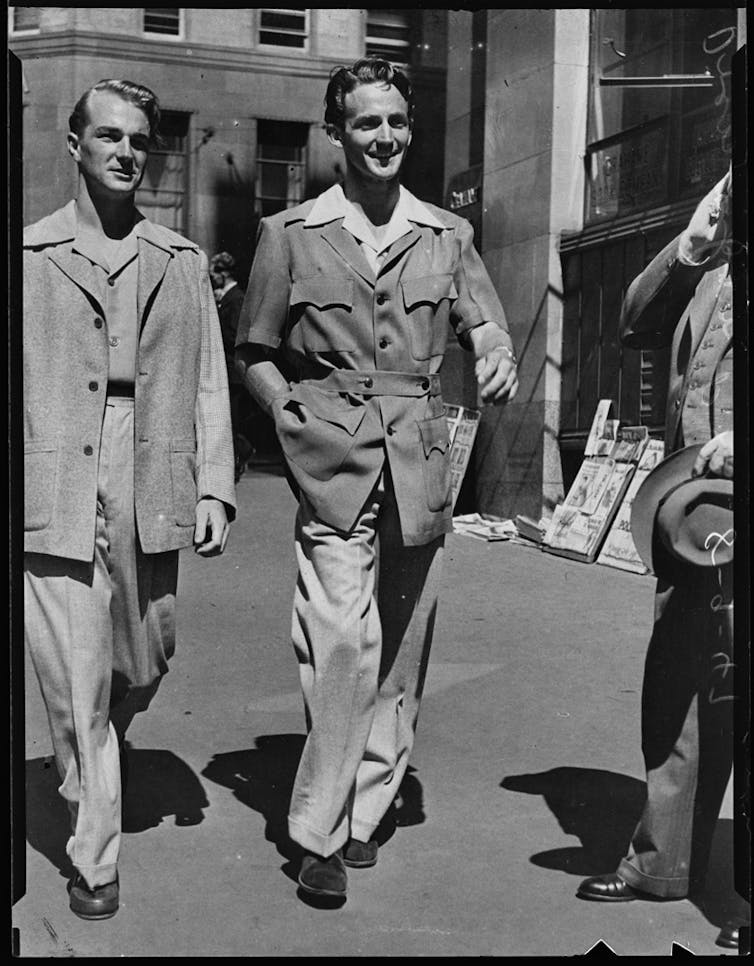
Into this void, some suggested men adopt sportswear for their return to the office — a more comfortable alternative men deserved after long years of war and austerity. This form of sportswear referred to jackets and trousers sold as separates and worn in different colour combinations, or woollen cardigans and jumpers.
An example was photographed in 1947 for Pix magazine. It captured two young men breezily strolling along Sydney’s Martin Place in open-neck shirts and loose or safari-style jackets. The photograph’s caption noted that they looked “cool, smart and comfortable” unlike “conservative” men in suits left to “swelter in the heat”.
Though suits continued to be worn by many office workers, this set in place the move towards more casual dress that would resonate across decades to come.

Read more: Fashioning blue-collars: chambray shirts and indigo-dyed workwear
Post-Pandemic Office Wear
Lockdown has again transformed our dress as we’ve tested new combinations of comfortable clothes while working from home — variously labelled “slob chic” and the “lockdown look”, with fancy dress days to keep things interesting.
Sales of athleisure and activewear brands spiked in 2020 thanks to massive sales of tracksuits and the like. The trade in locally made sheepskin boots also reportedly boomed.

Read more: COVID-19 could have a lasting, positive impact on workplace culture
Some forecast our penchant for relaxed clothing will ripple through office dress protocols this year in a move to something akin to casual Fridays.
While it’s unlikely the tracksuit will replace the suit just yet, looser styles, freer tailoring and lighter fabrics would be another step along the path suggested by dress reformers a century ago.![]()
Lorinda Cramer, Postdoctoral Research Associate, Australian Catholic University
This article is republished from The Conversation under a Creative Commons license. Read the original article.
It gets better with age: a brie(f) history of cheese in Australia
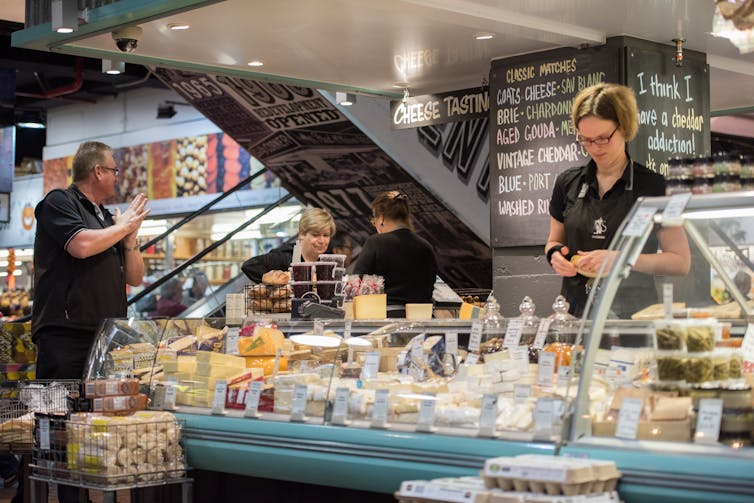
In this series, our writers explore how food shaped Australian history – and who we are today.
The history of cheese in Australia has, until recent decades, been a rather tasteless affair. Not so long ago our choice was either “vintage” or “tasty”.
We associate Italy with salty wedges of Parmigiano-Reggiano. France is synonymous with pillowy-soft triple bries and intensely aromatic Roquefort. Paneer is the cheese of Indian curries. Queso Oaxaca is quintessentially Mexican, while the humble cheddar is named for the English village in which it was first produced.
Australia’s most well-known cheese, on the other hand, is not recognised for its remarkable flavour or texture but rather its brand name, which was recently changed to Cheer following campaigning of many years against its racist connotations.
Great cuisines — and their cheeses — have arisen from peasant societies. As the historian Keith Hancock wrote in 1930, Australia “has not inherited a village civilisation nor love of the soil, but she has inherited factories and factory farms”.
Early Provisions
Cheese is listed among the provisions aboard the First Fleet. Even convicts received a weekly cheese ration — albeit, less than that of officers and seamen.
Ensuring access to cheese upon arrival also seems to have been a priority for the white settlers, acquiring seven cows on the fleet’s final stop in The Cape of Good Hope. However, the plan to begin cheesemaking was thwarted when the cows escaped soon after they arrived in what they called New South Wales.
It took a further eight years for another herd to be assembled, and the first dairy was built in Rose Hill in 1796, near the banks of the Parramatta River. The fledgling industry expanded with the foundation of Van Diemen’s Land in 1804. By 1820 the weekly produce market was offering cheese for sale at two shillings a pound.
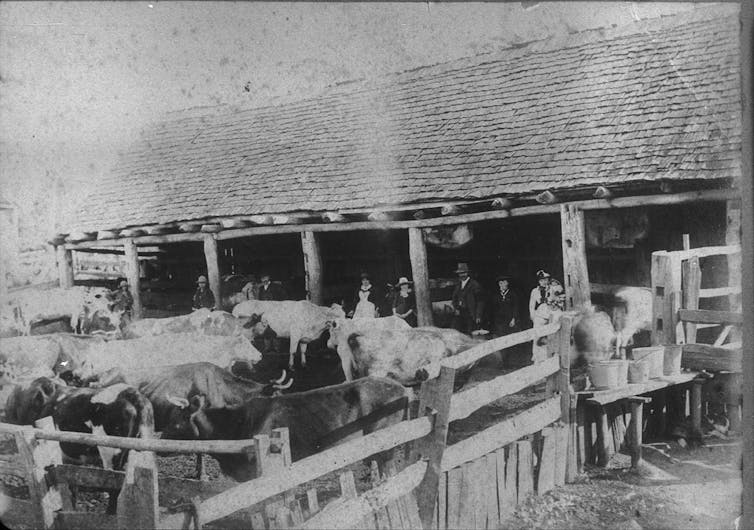
Given that cheddar was by far the most common cheese being produced in England at the time this cheese was most likely a rudimentary cheddar.
Australia’s first commercial cheese factory — the Van Diemen’s Land Company — was established in Tasmania in the 1820s. Not long after, farmers from the NSW district of Illawarra began to send their cheese and butter to Sydney by sea. As more ports opened, dairying extended all the way down to Bega in southern NSW.
Industrialisation
Henry Harding arrived in Bodalla on the south coast of New South Wales from England in 1853. The son of the “father of Cheddar cheese”, Joseph Harding, Henry shared his father’s dictum that: “cheese is not made in the field, nor in the byre [cowshed], nor even in the cow, it is made in the dairy”.
This began a long era of commercialisation and industrialisation in which consistency, ease of storage and distribution and longevity were foremost considerations. The blue and yellow boxes of Kraft processed cheddar which travelled so well became a fixture of our cheese landscape.
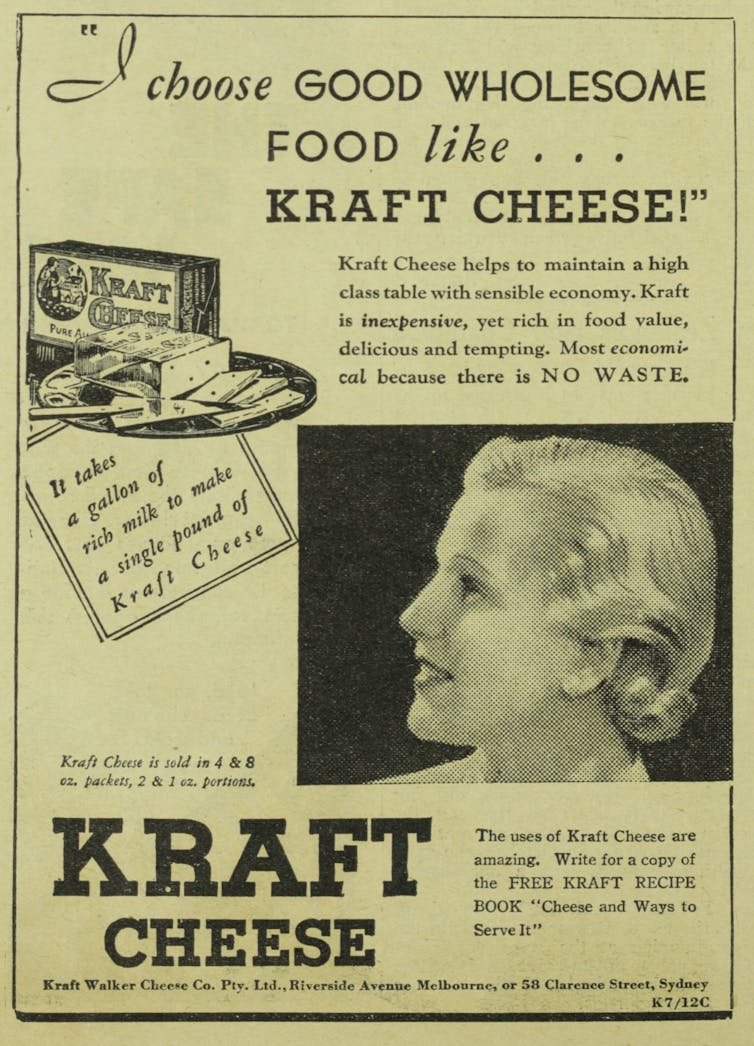
Before the 1980s, most of the cheese made in Australia were cheddars from big factories. But in that decade we begin to see some European varieties introduced — though virtually all white-mould cheeses sold in Australia until the mid 1980s were tinned camemberts and bries, mass produced in Europe and stabilised to survive long periods in transit.
Read more: An ode to mac and cheese, the poster child for processed food
This cheese bore very little resemblance to those available in Europe, and stand in stark contrast to the vast range of artisan cheeses on offer in Australia today: delicate, hand-tied pouches of cow’s milk mozzarella with their oozy filling of stracciatella made by Vannella Cheese; nutty, aged French-style washed-rind from Holy Goat made with organic goat milk or biodynamic quark and feta from Mungalli Creek Dairy produced without fertilisers or pesticides.
To what then, can we attribute the rise of this vibrant cheese industry?
Broadly speaking, there was a cultural and political shift towards more ethical practices in food production and a backlash against industrial food systems.
The values and meaning we associate with mass-produced food have changed.
Food Cultures
Perhaps it started with the tree-change hippies in the 1970s. A small, decaying dairy in Nimbin was resurrected following the counter-cultural Aquarius Festival of 1973, bringing with it an ethos of sustainability, community, resilience and simplicity.
Read more: Nimbin before and after: local voices on how the 1973 Aquarius Festival changed a town forever
Then there is the slow food movement founded in Italy in 1989. It espouses ideals of good-quality flavoursome food, clean production that does not harm the environment, fair accessible prices for consumers and fair conditions and pay for producers.
More recently, we’ve seen an “artisanal turn” with its critical focus on the industrialisation of food. The proliferation of food media, celebrity-driven television cooking shows and social media have taught us good food is small-scale, artisan, local, connected – and the antitheses of factory-produced sliced cheddar.

Three decades ago, low cost cheddar accounted for around 70% of the cheese we consumed. These days, we eat a diversity of fresh, mouldy, semi-hard and stretched cheese — almost half of the cheese we consumed in 2019.
We may not have a national cheese but we have certainly developed a distinctly Australian food culture. Central to this culture is the emphasis on quality over quantity. There is certainly something to cheer in that.![]()
Morag Kobez, Associate lecturer, Queensland University of Technology
This article is republished from The Conversation under a Creative Commons license. Read the original article.
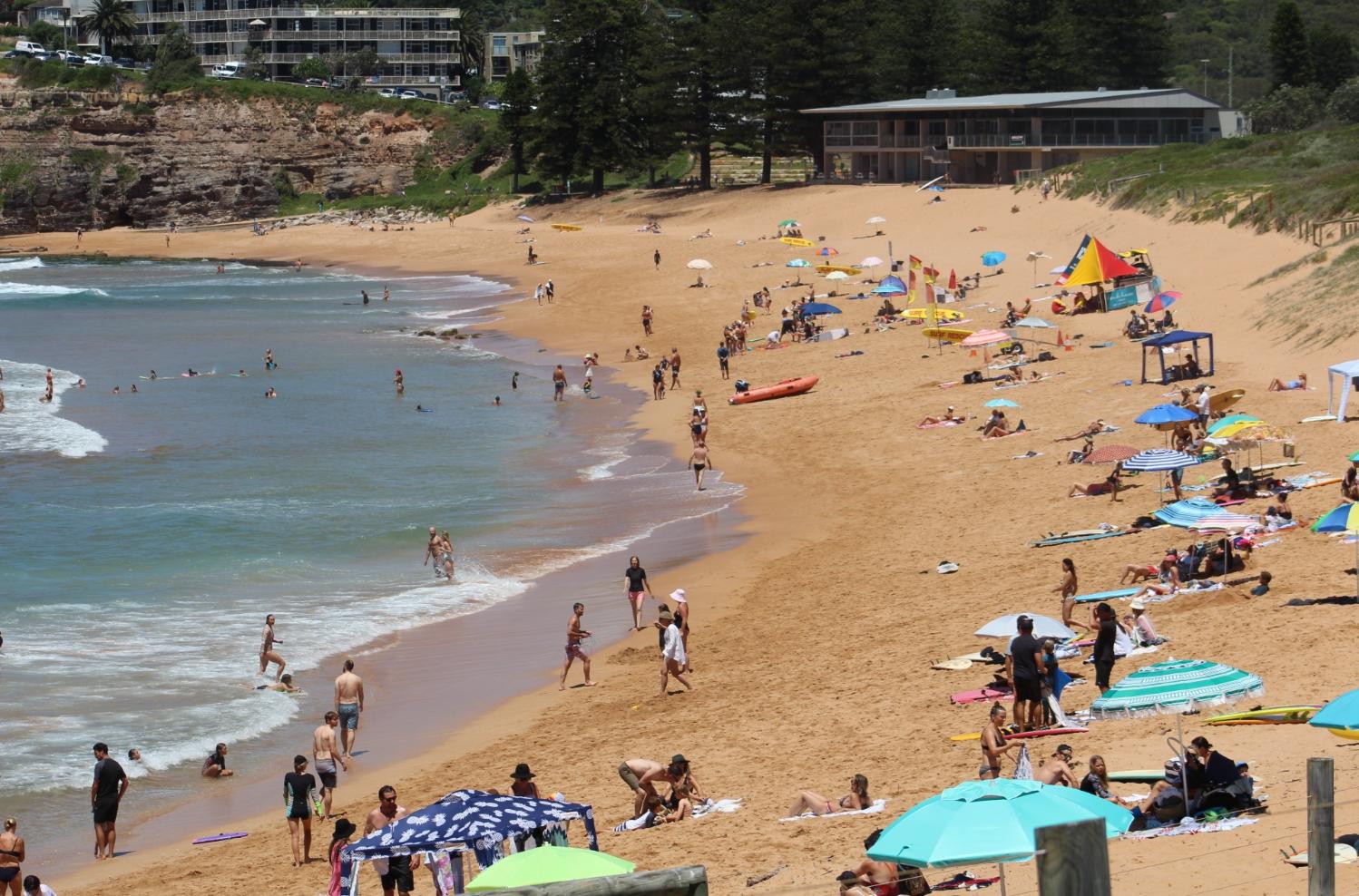
Book Of The Month February 2021: Forest Culture And Eucalyptus Trees
by Ellwood Cooper, Ellwood and Ferdinand von Mueller, 1876